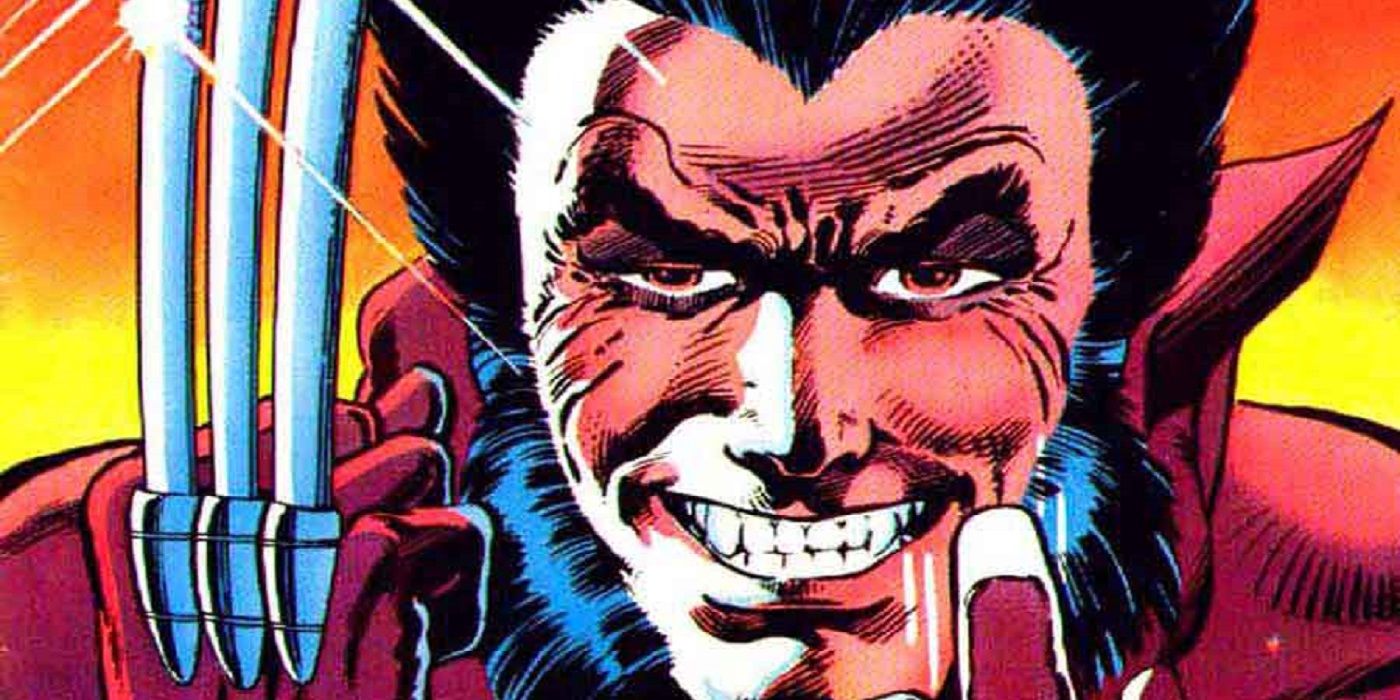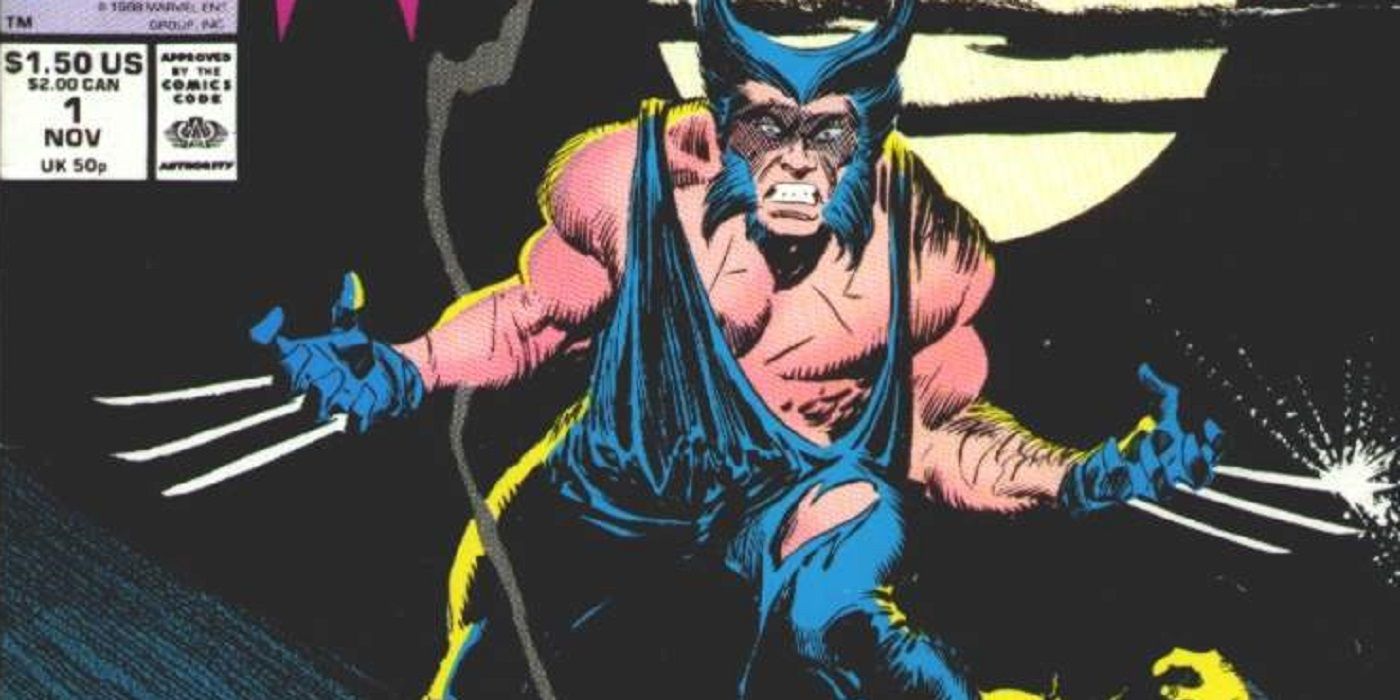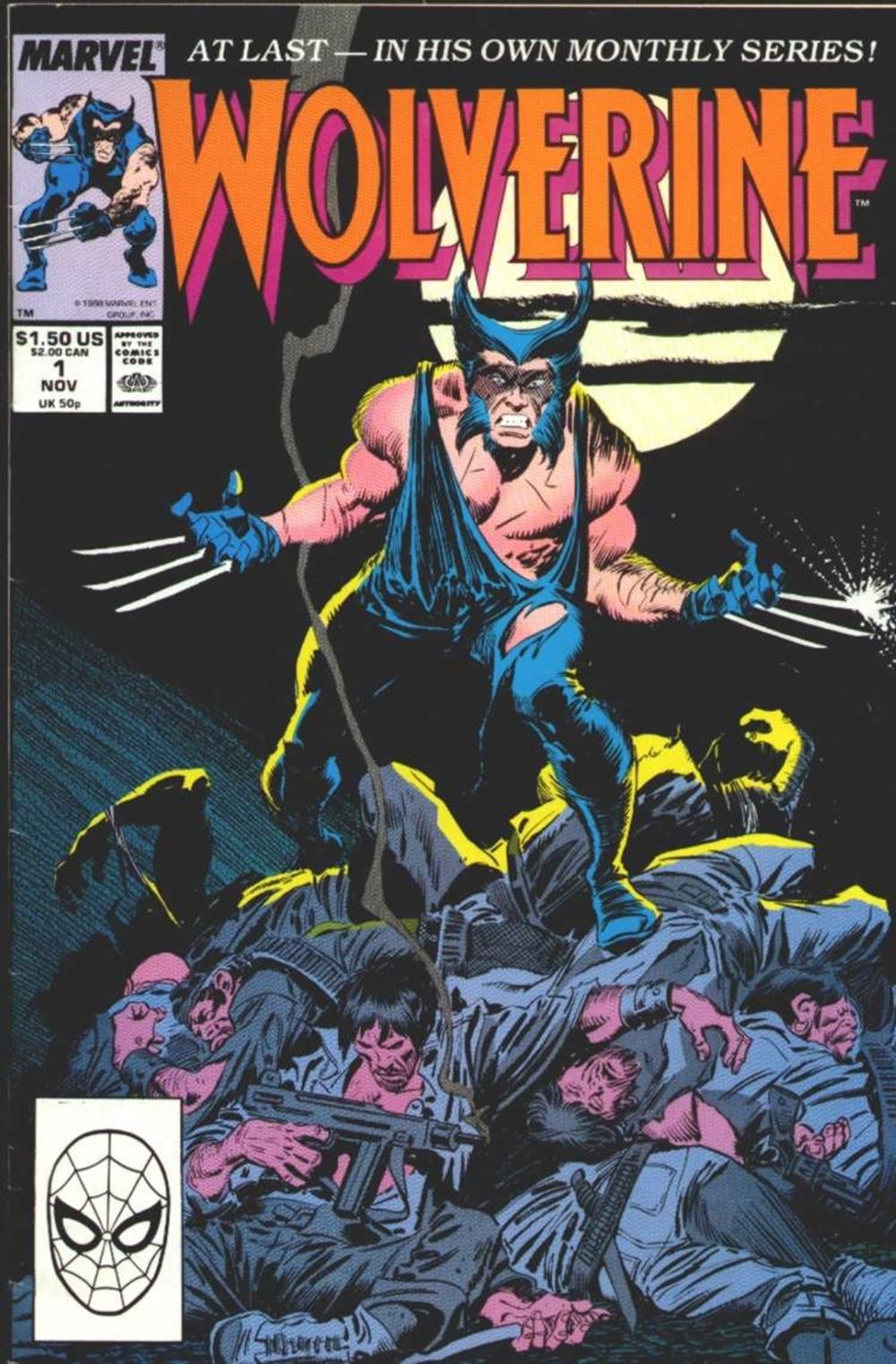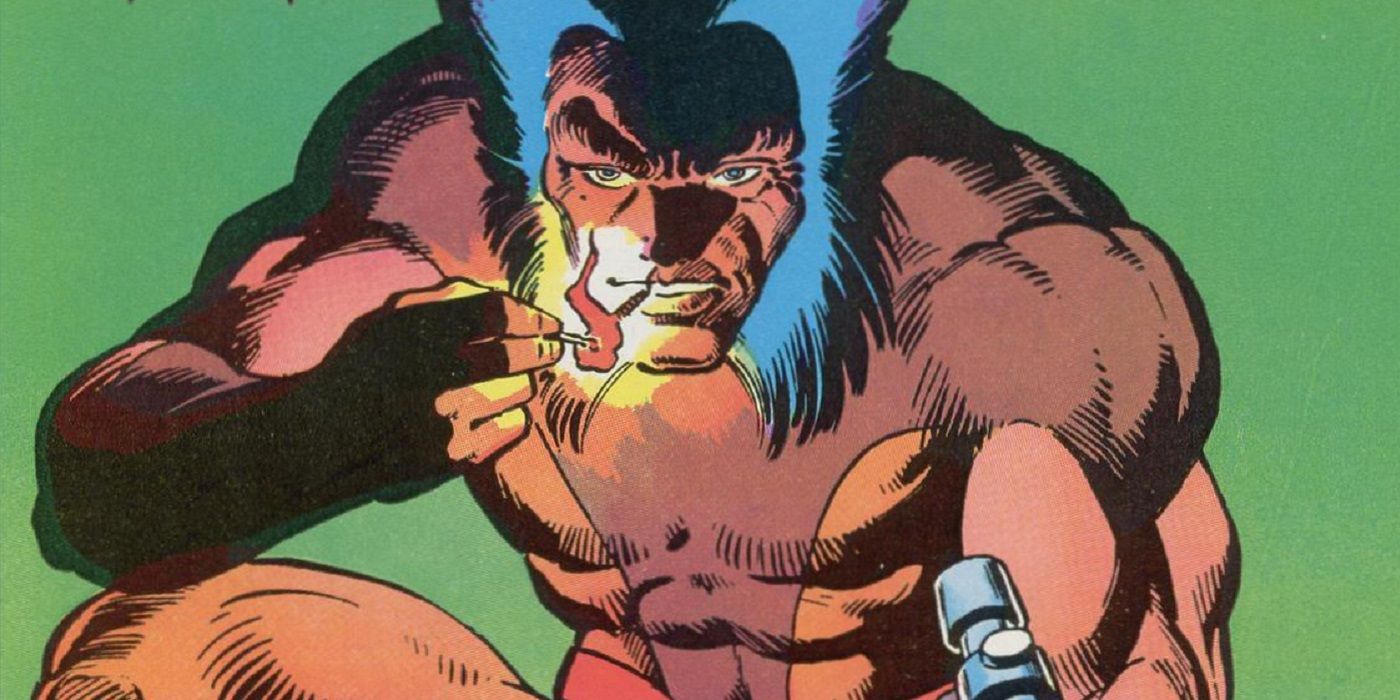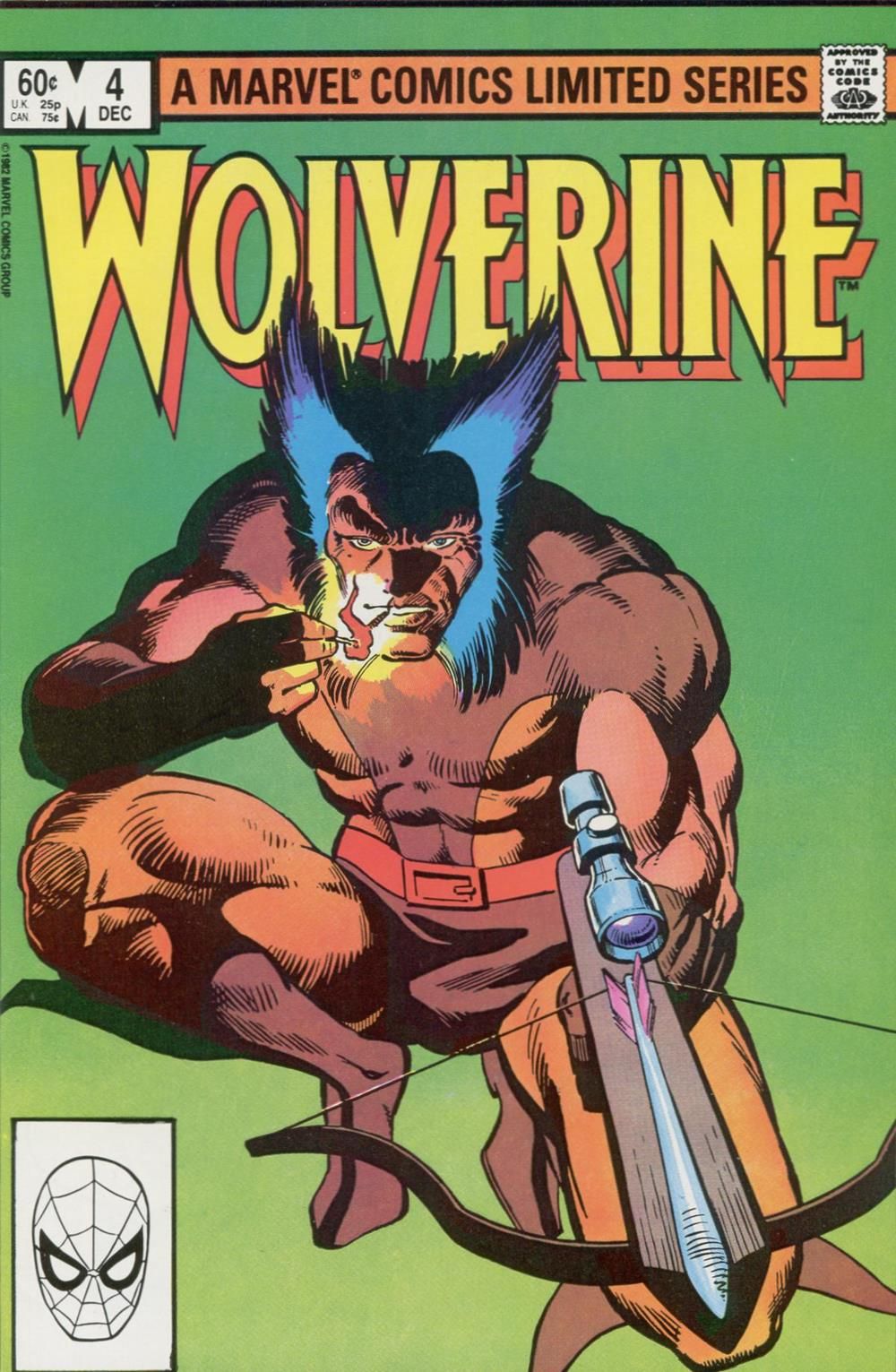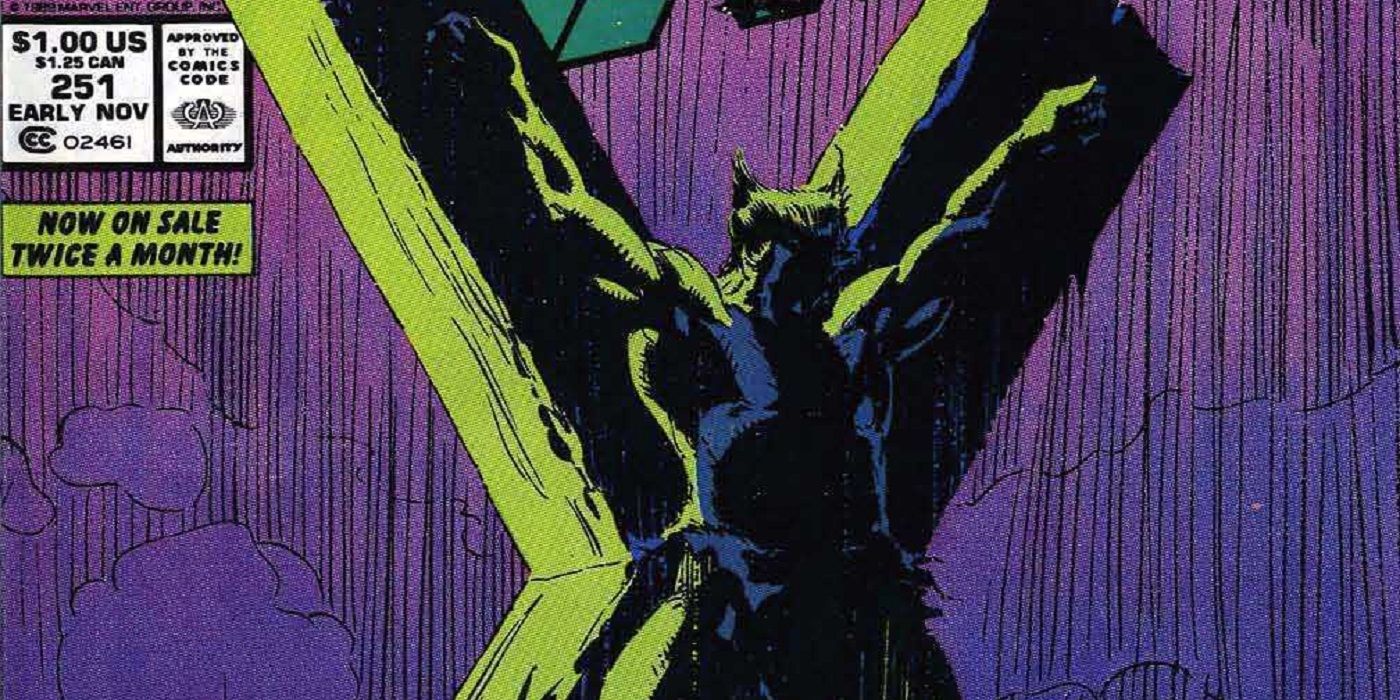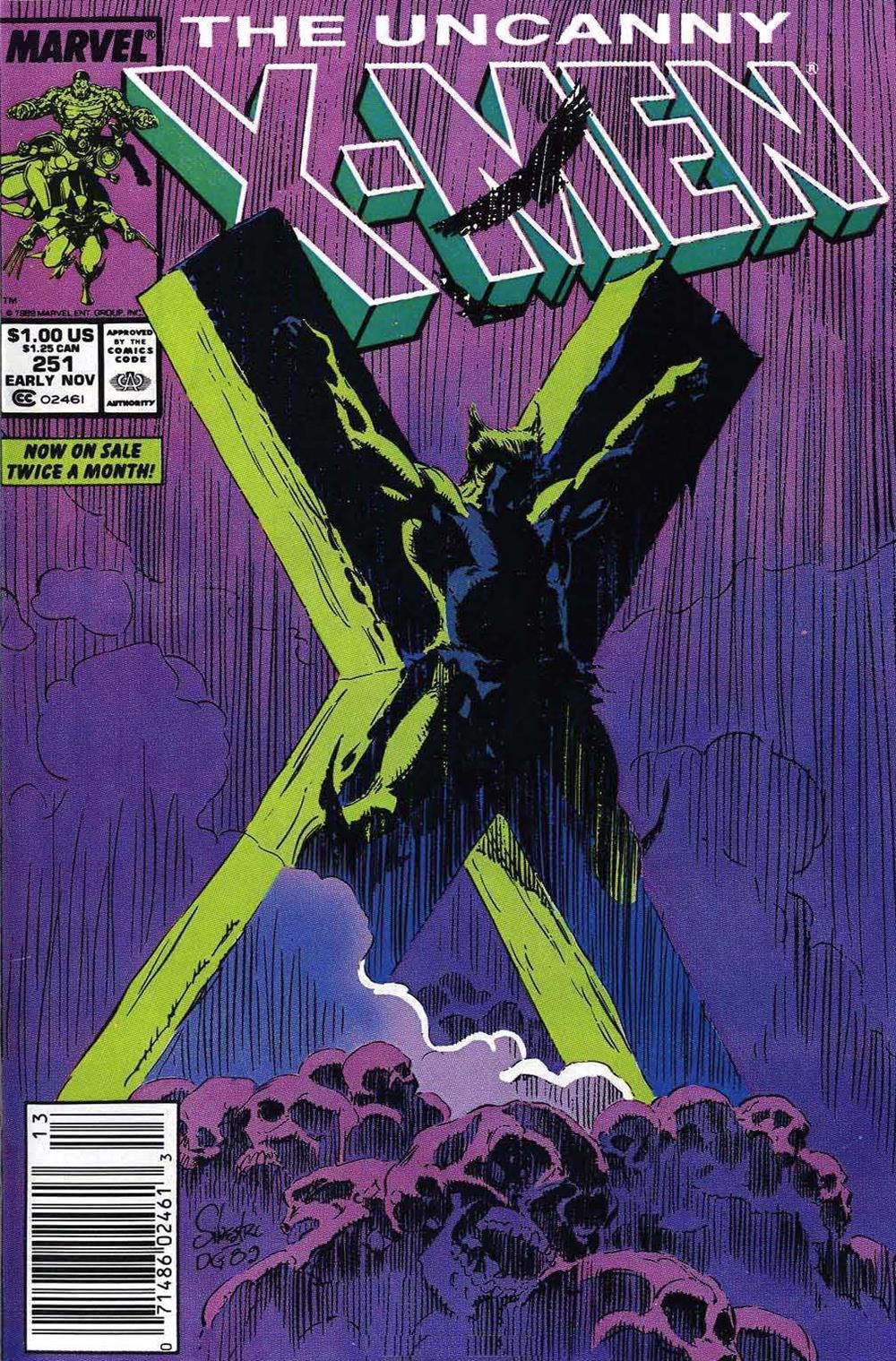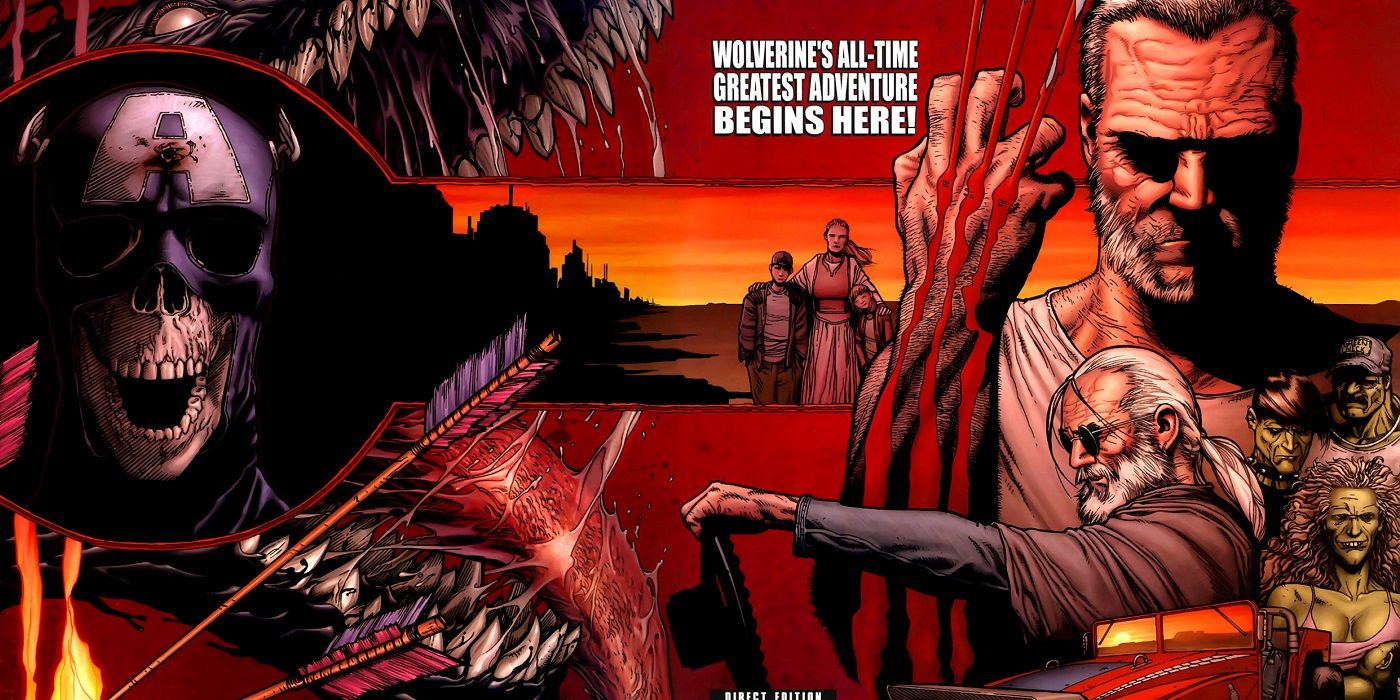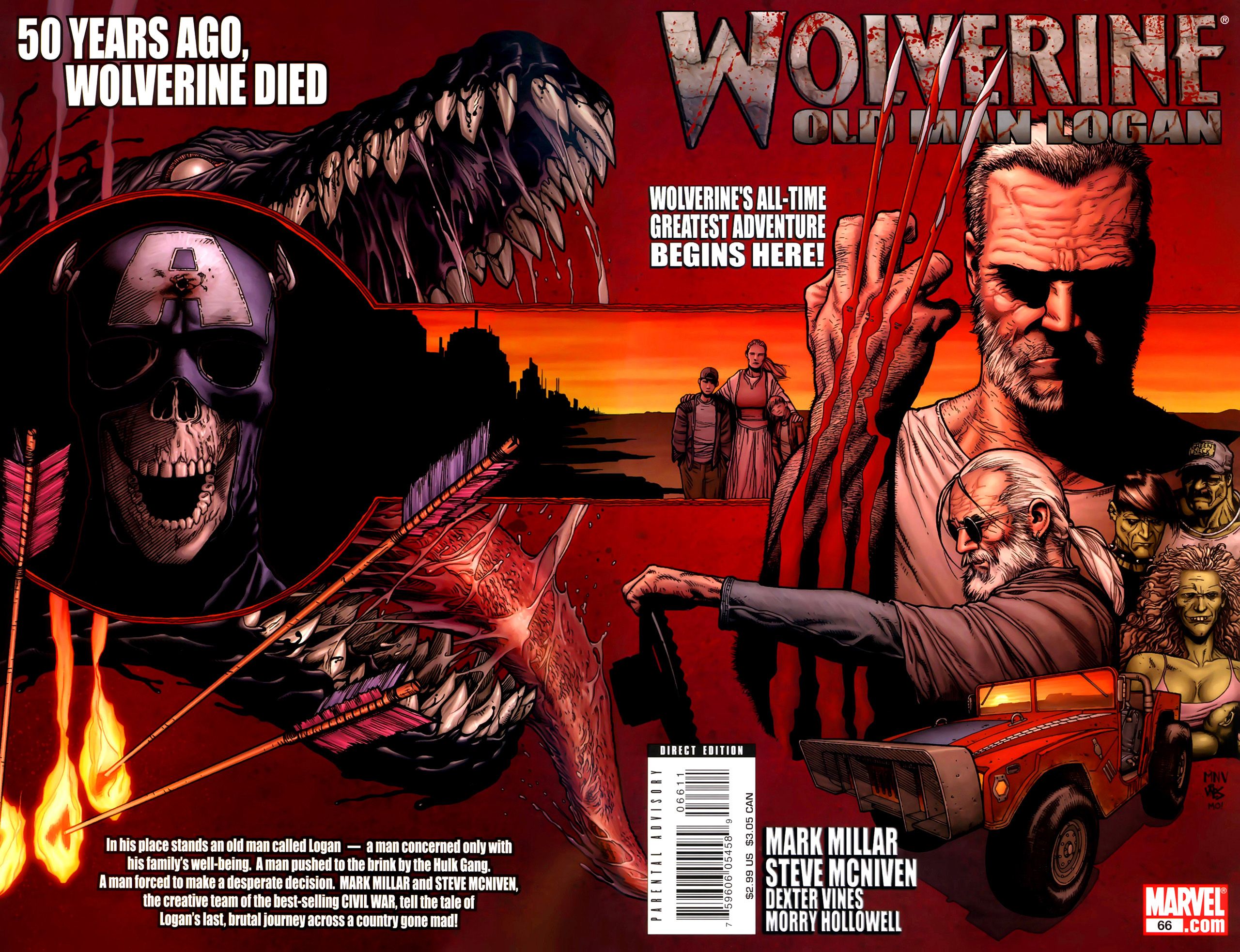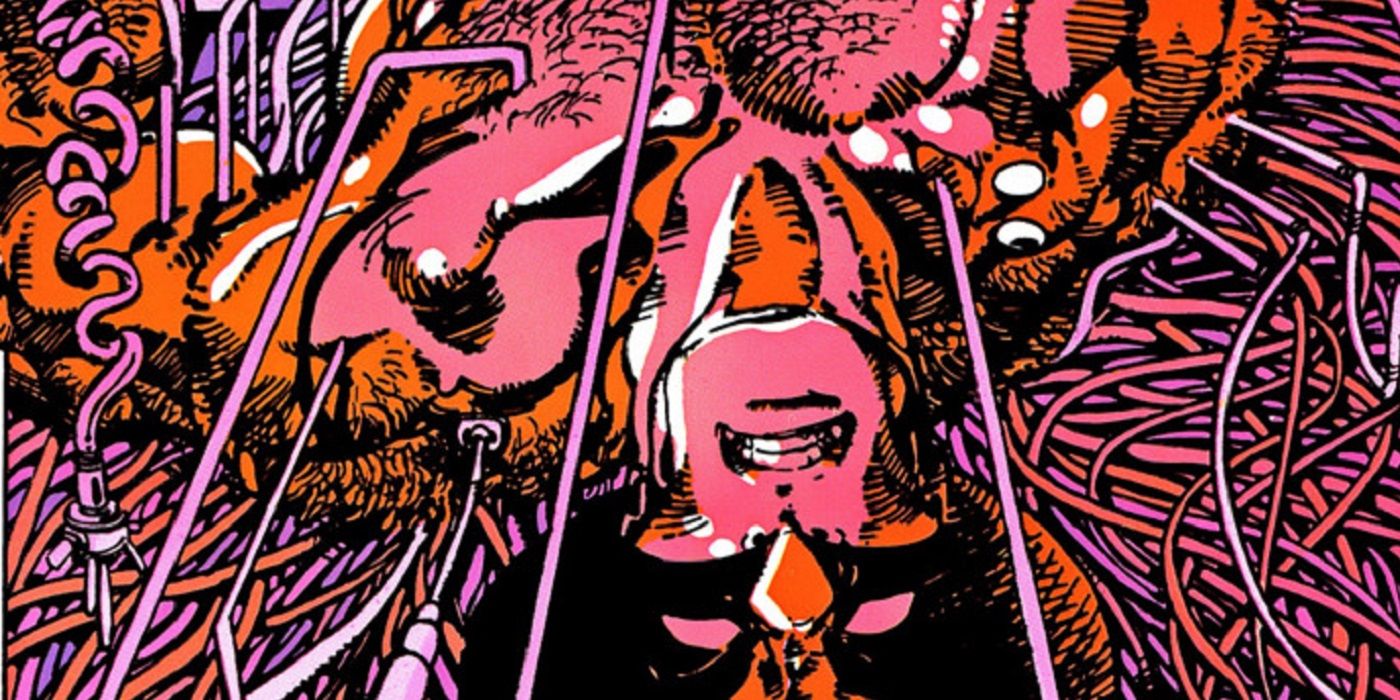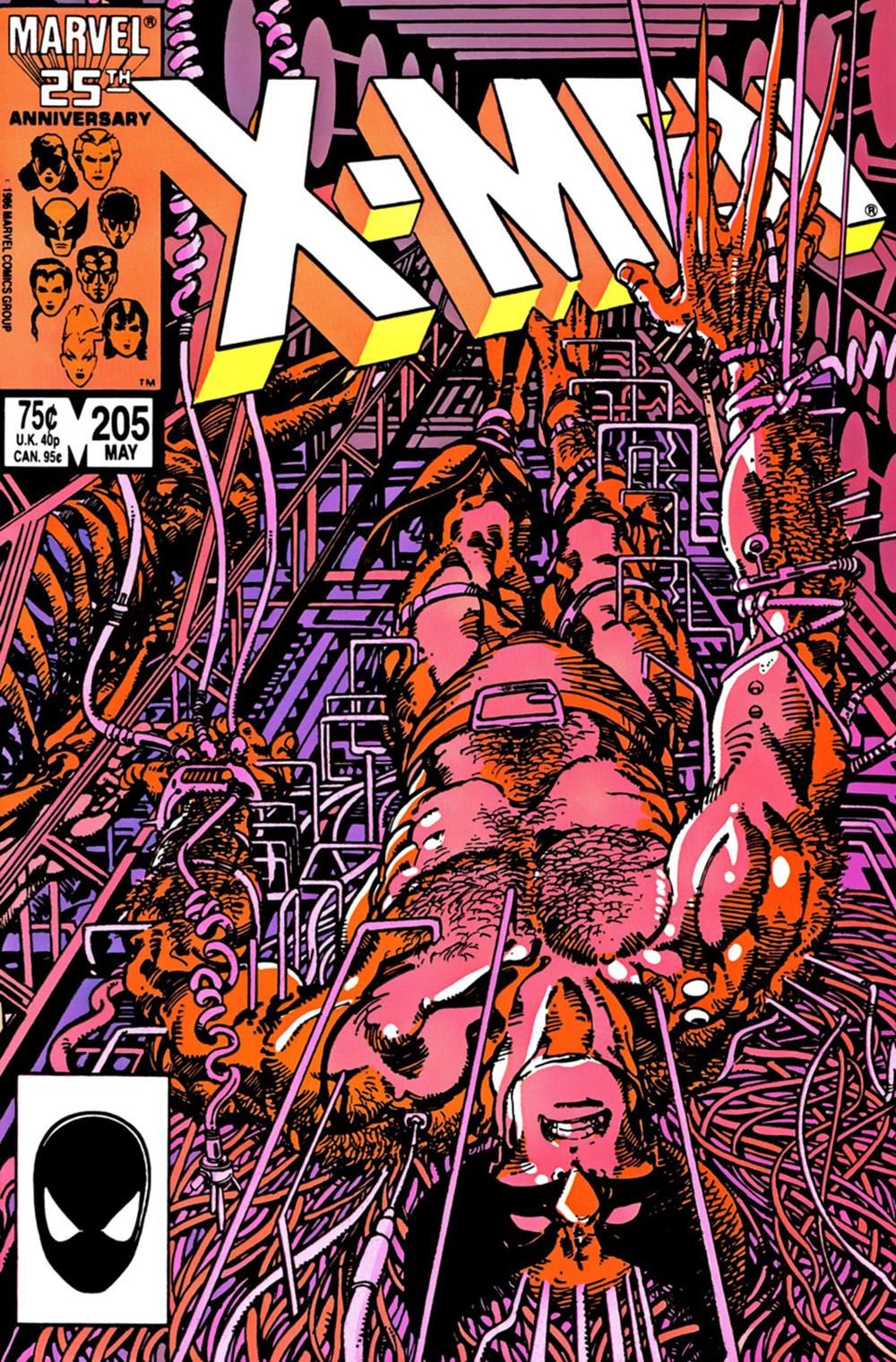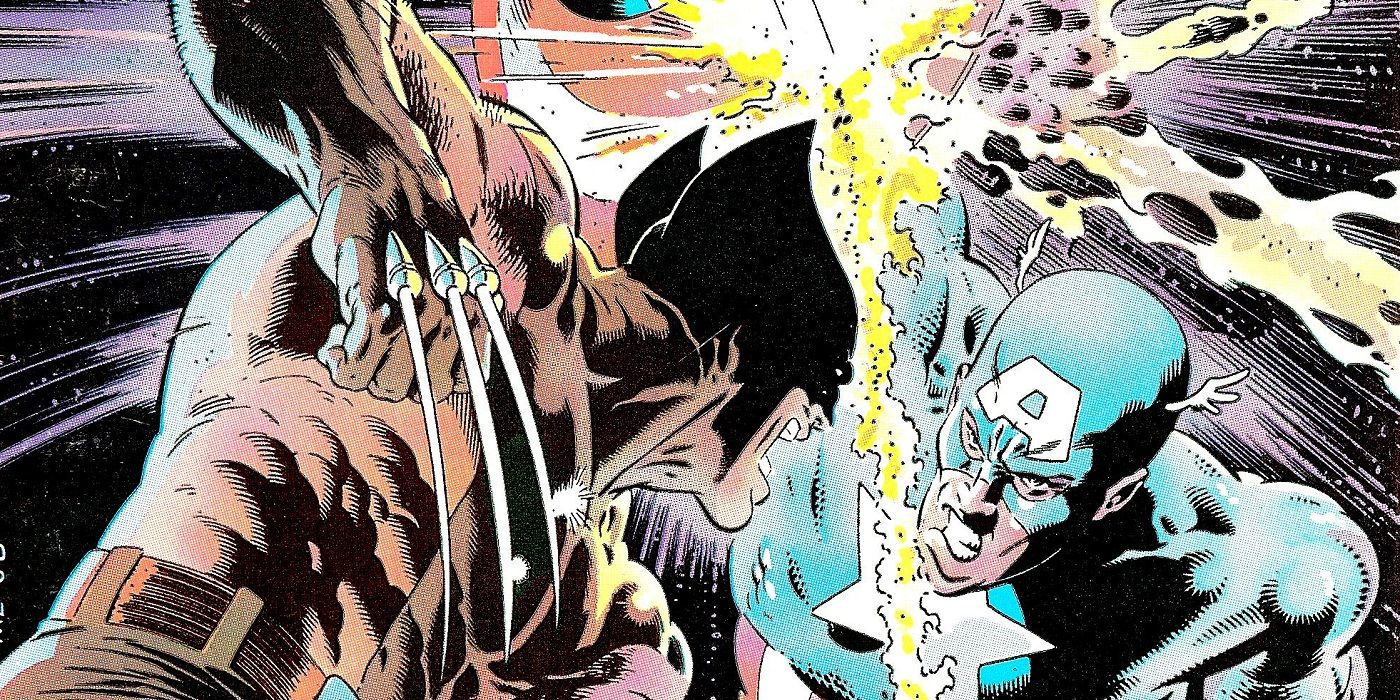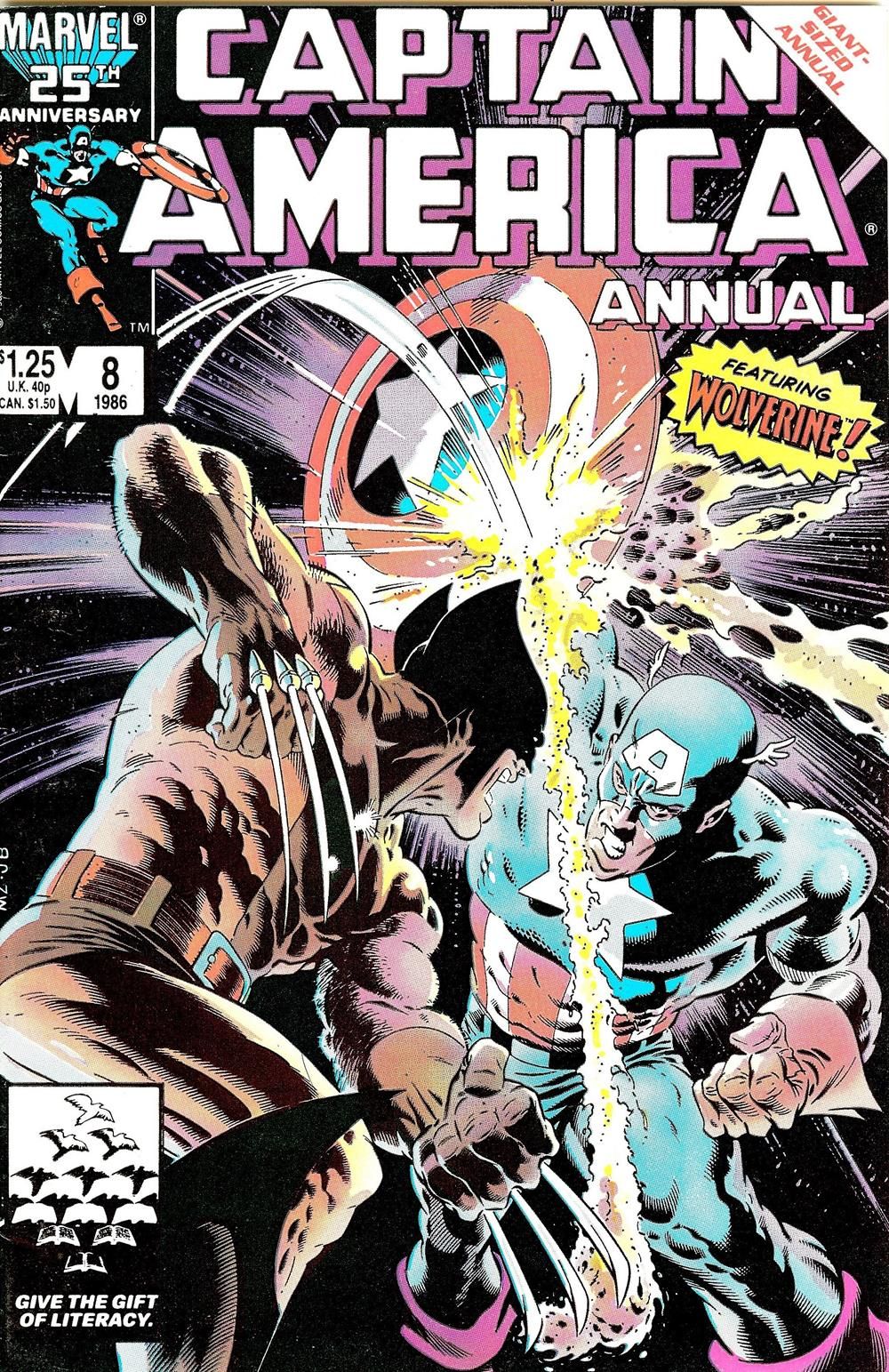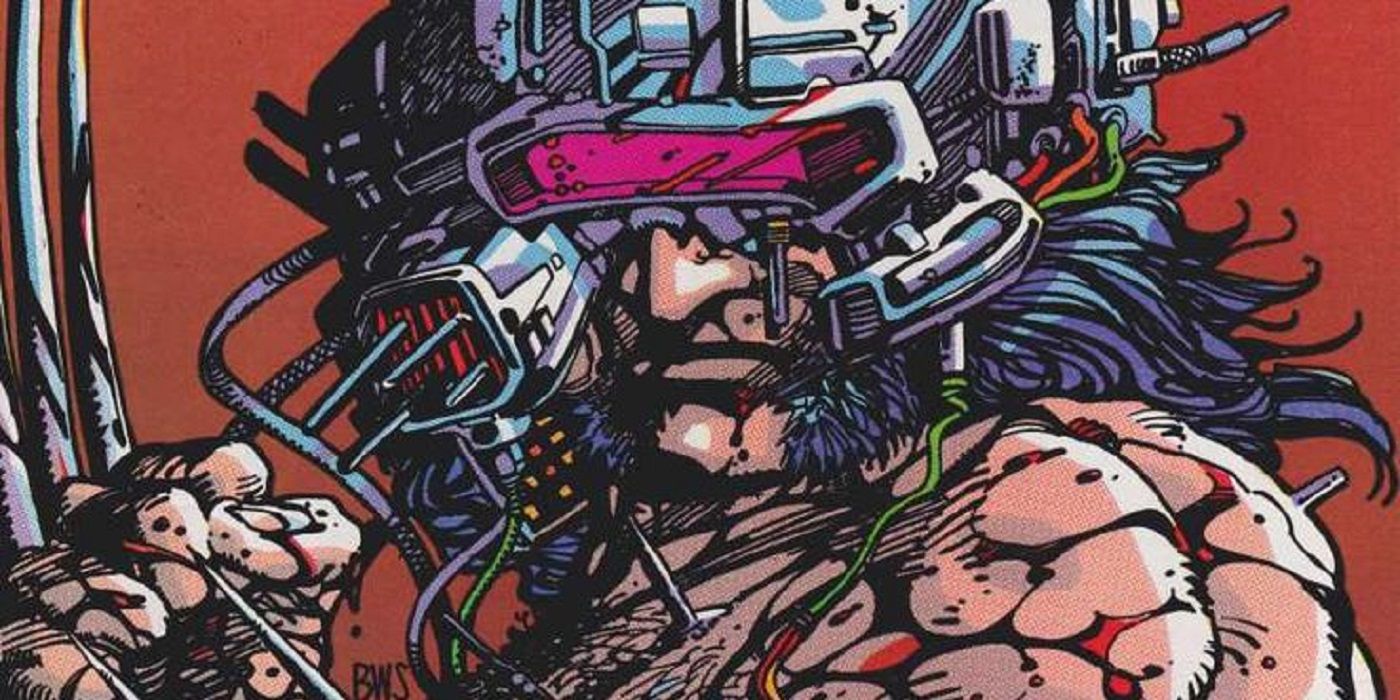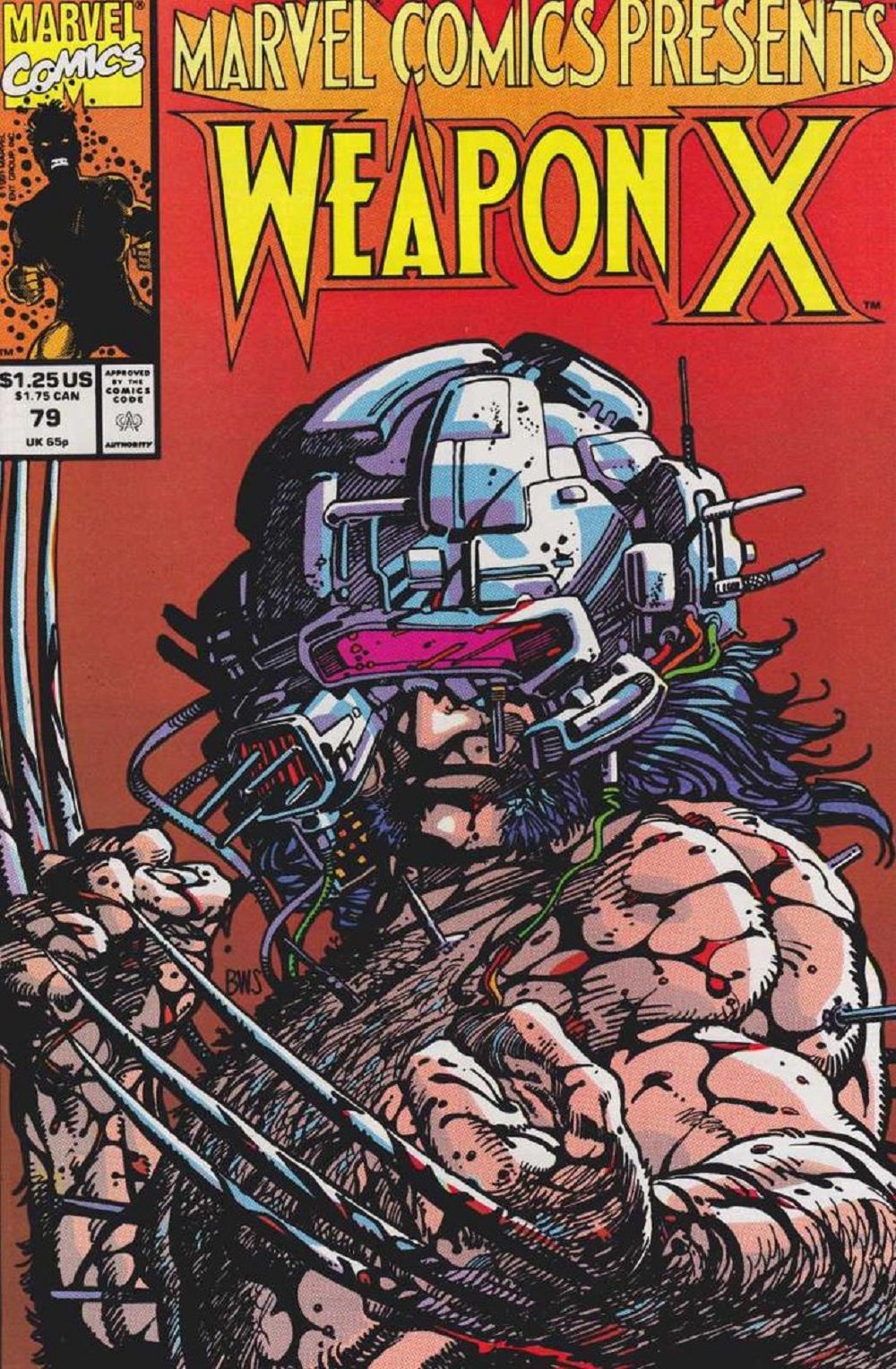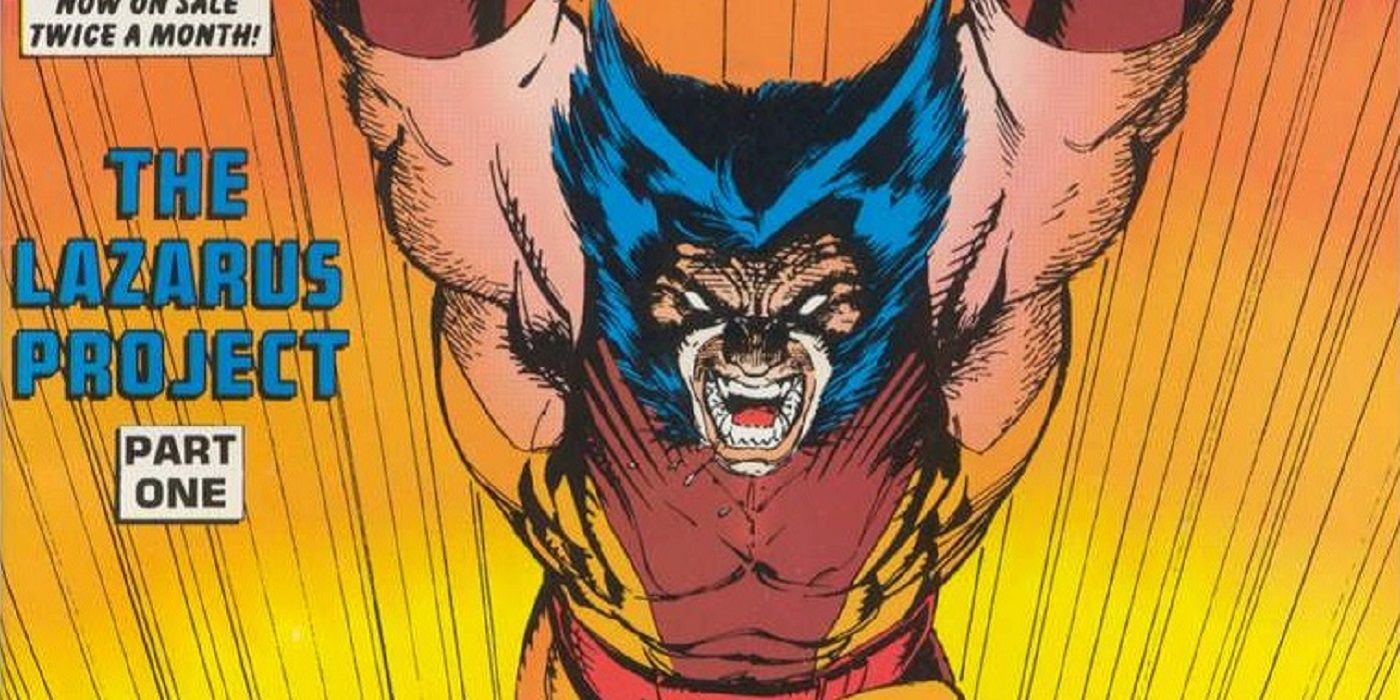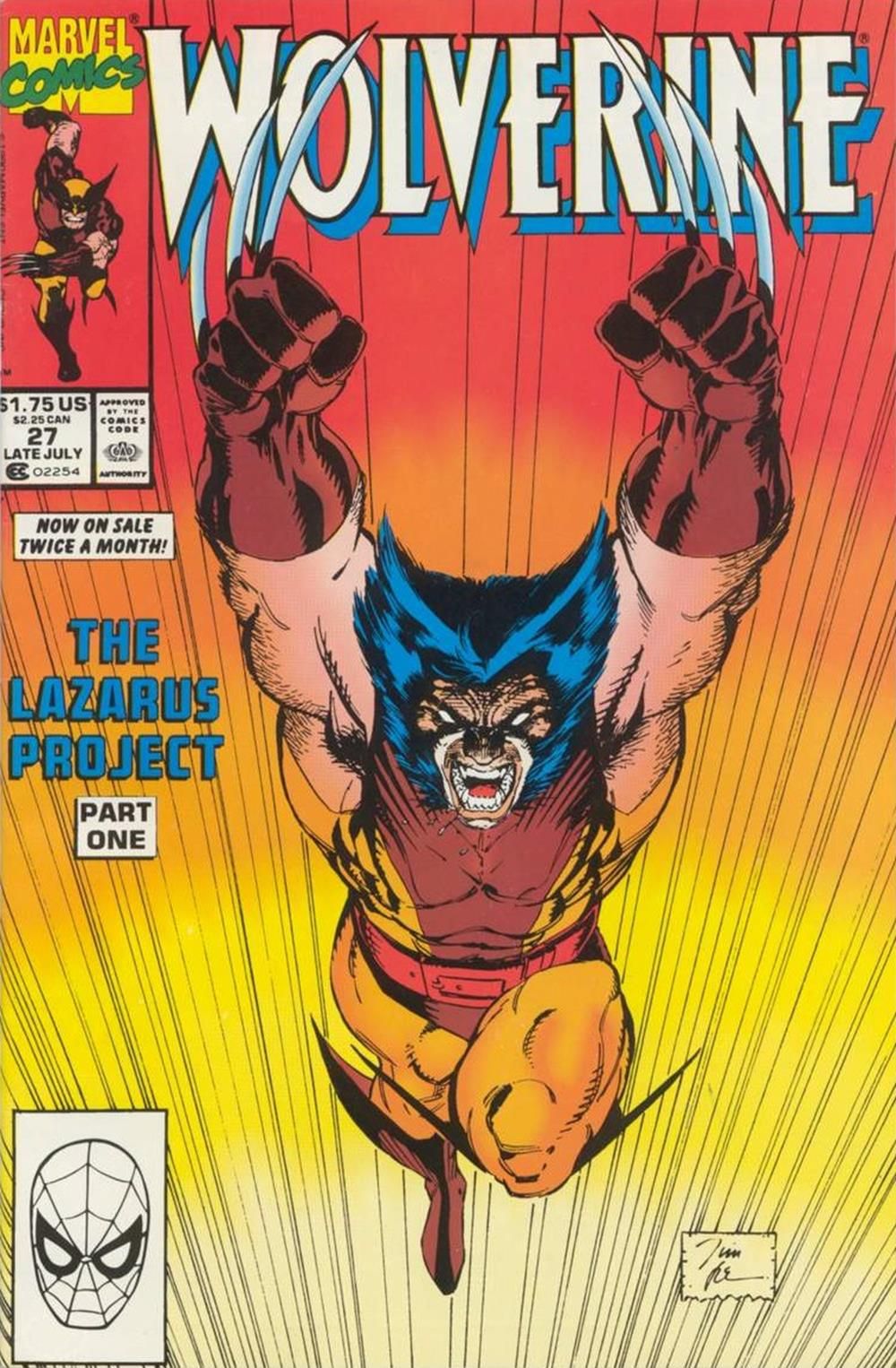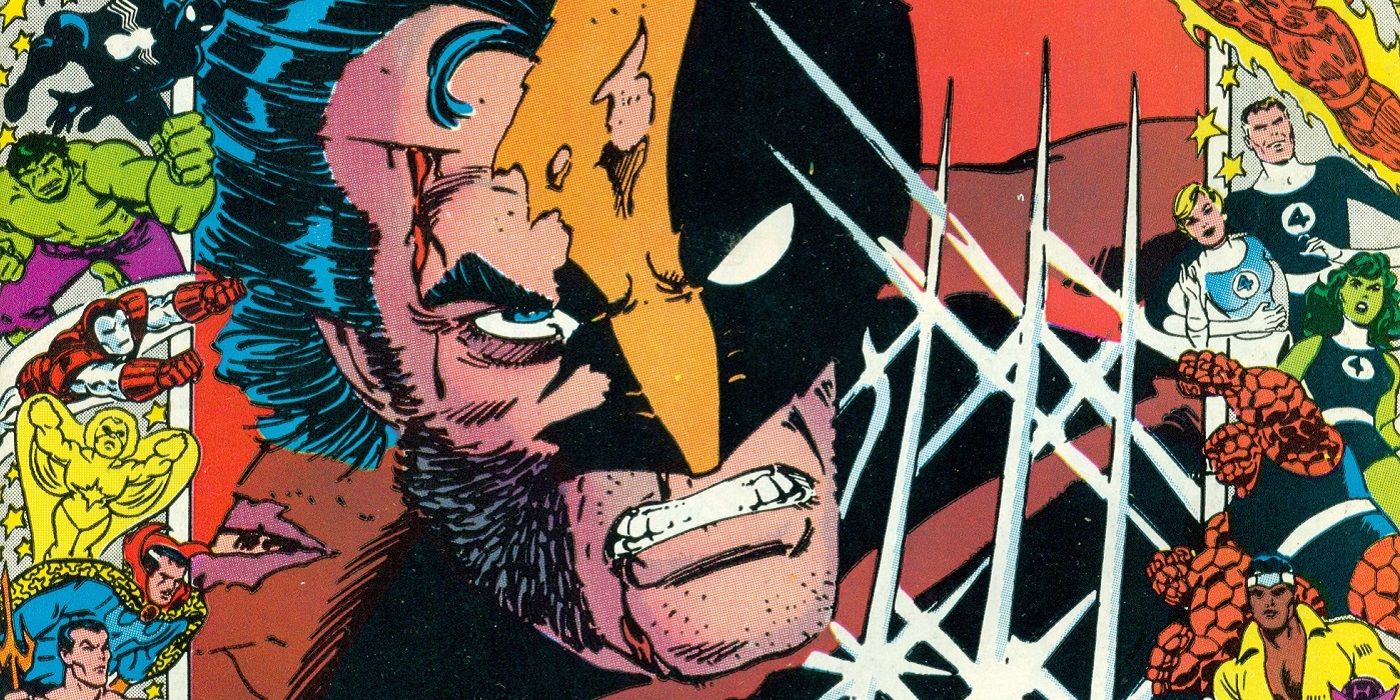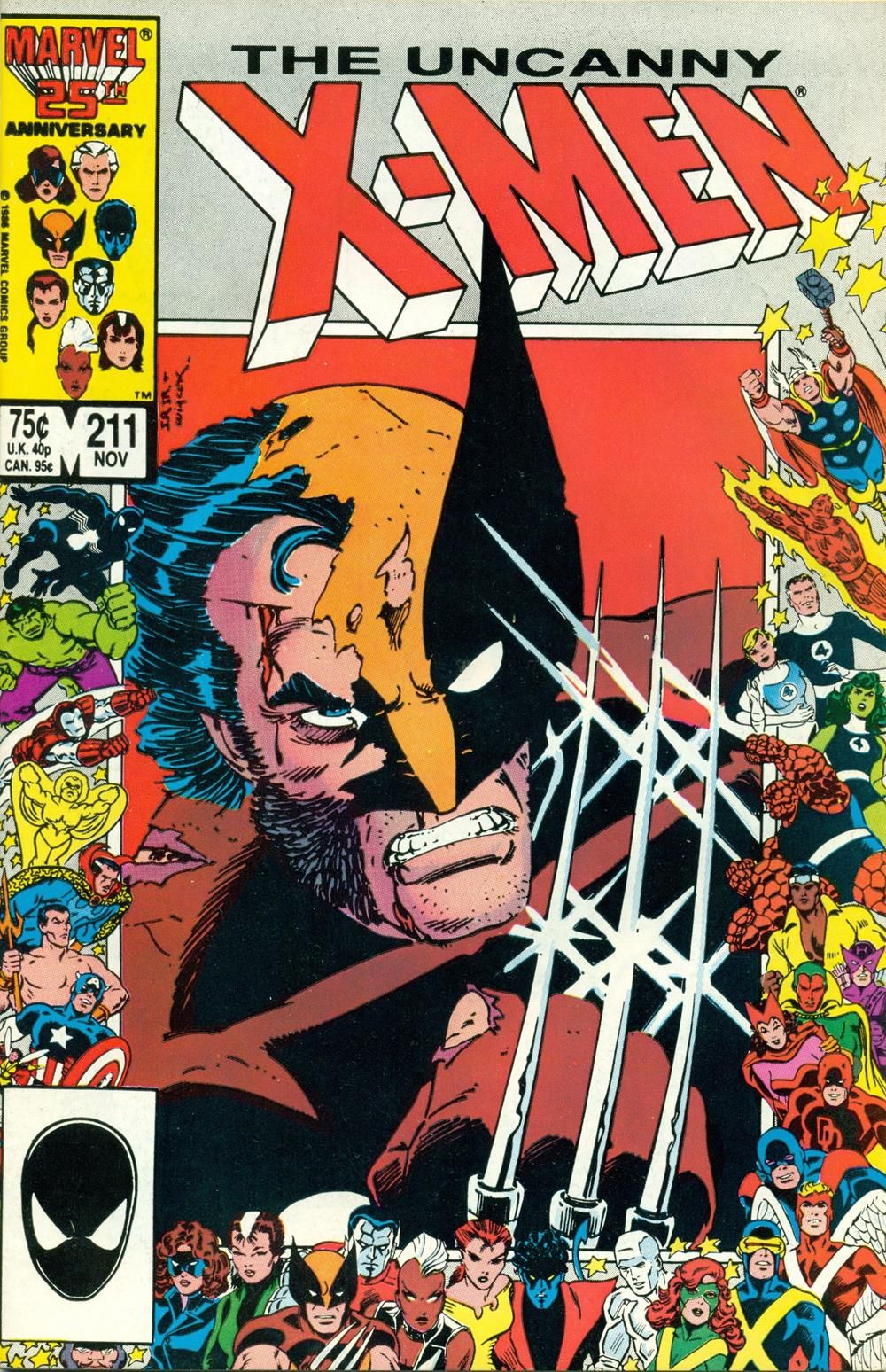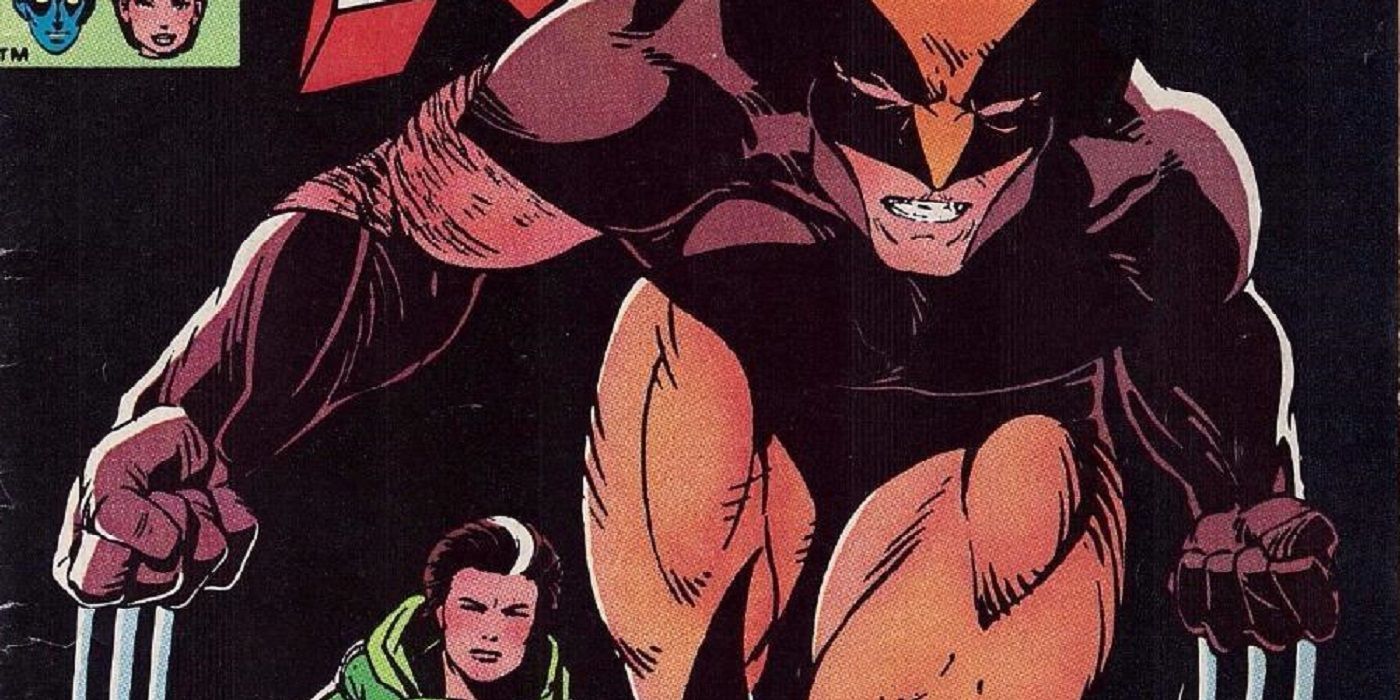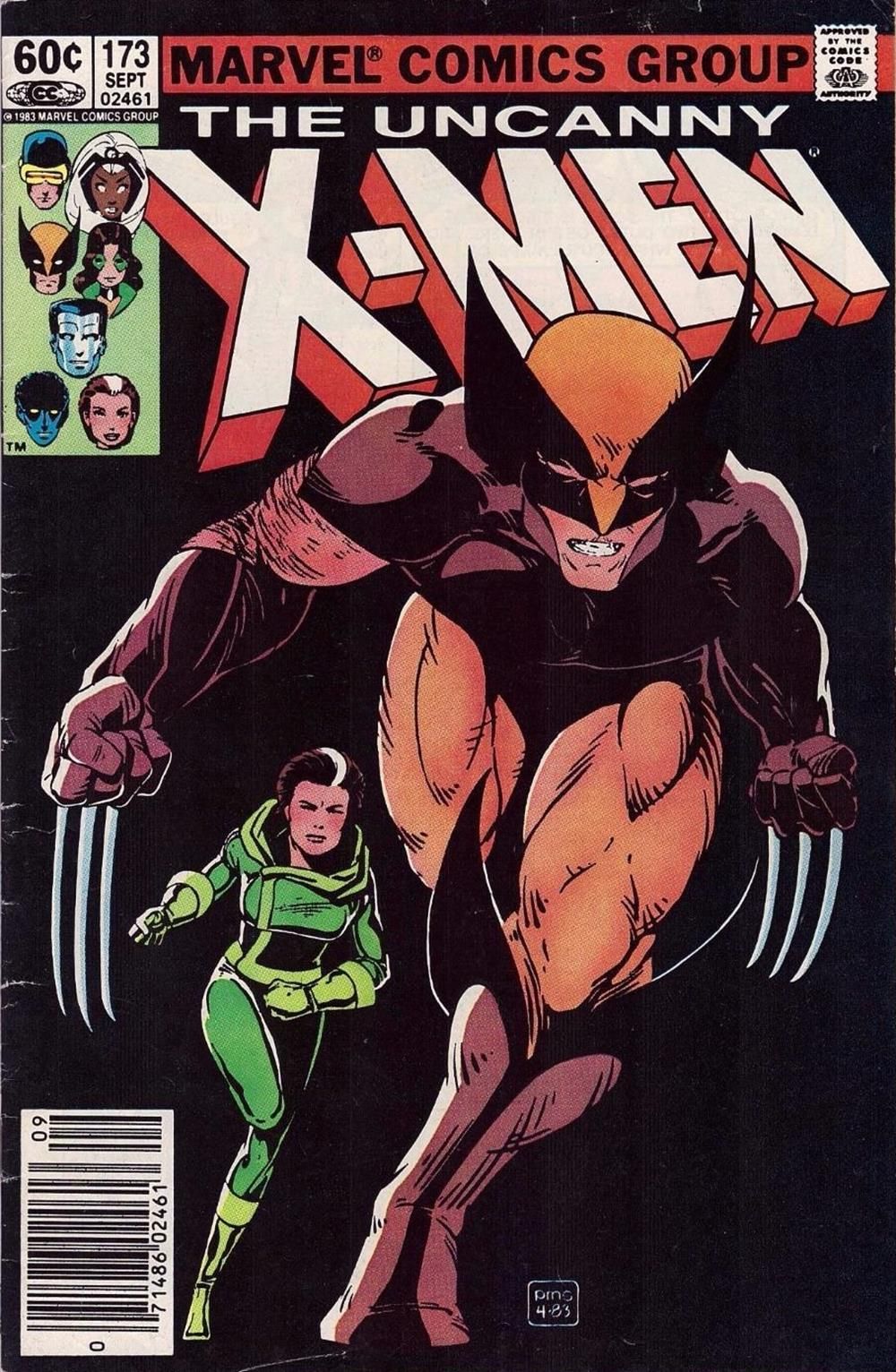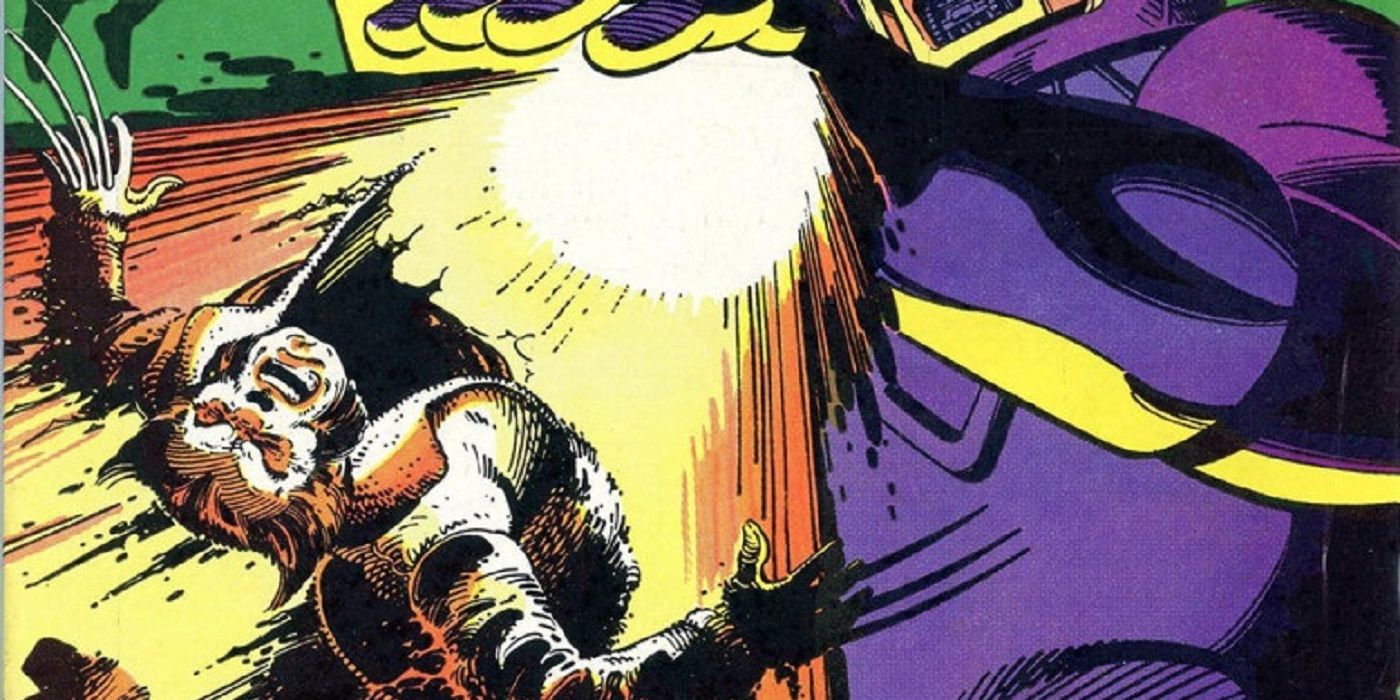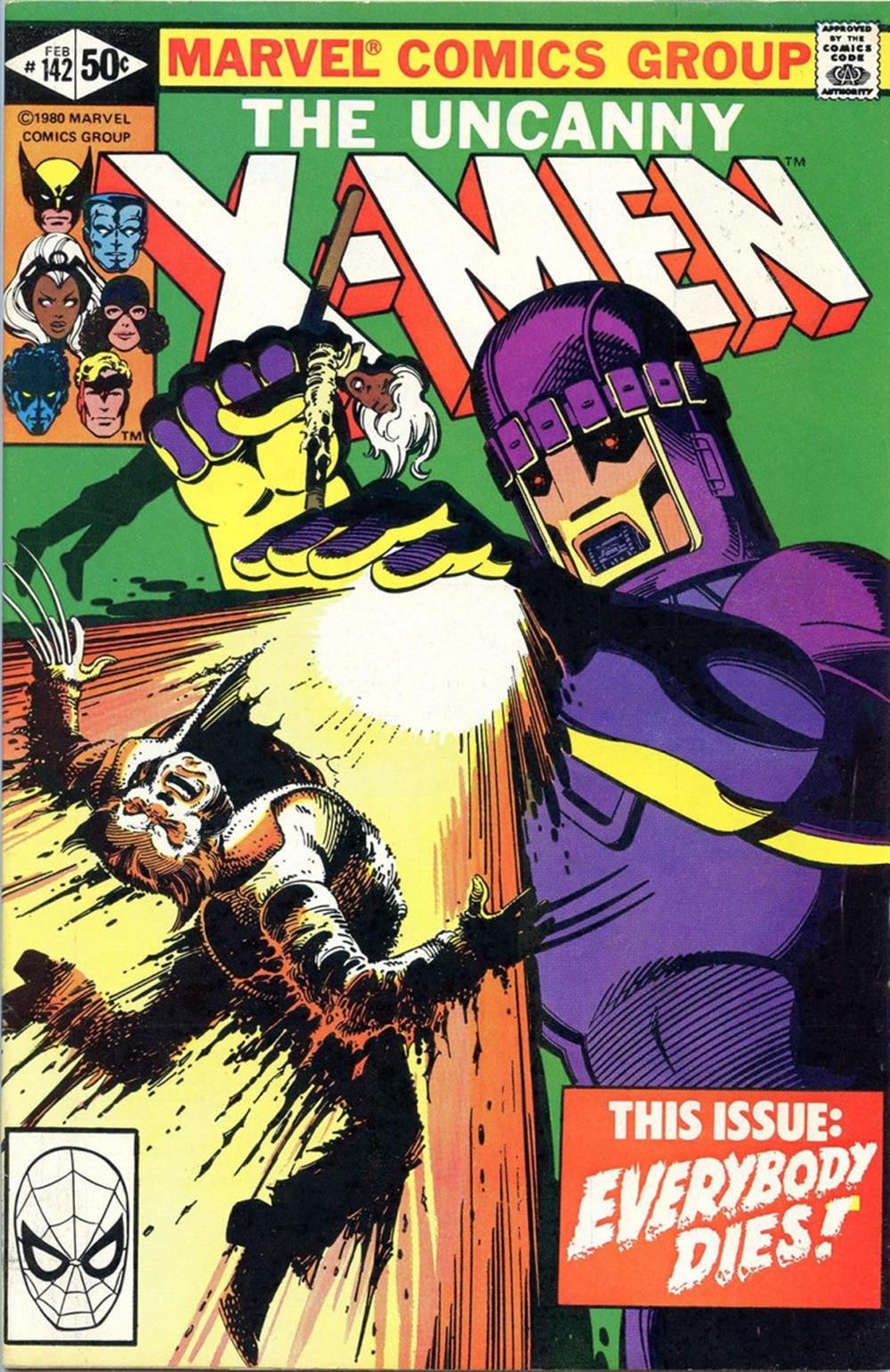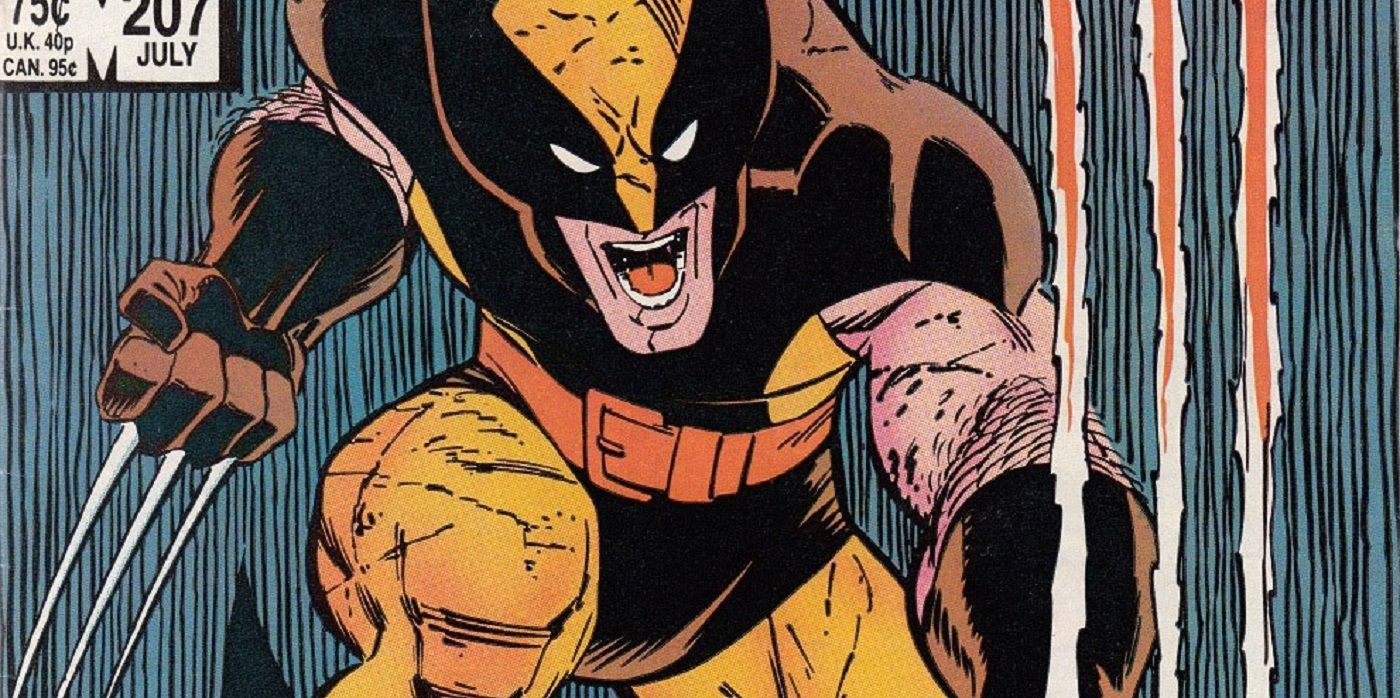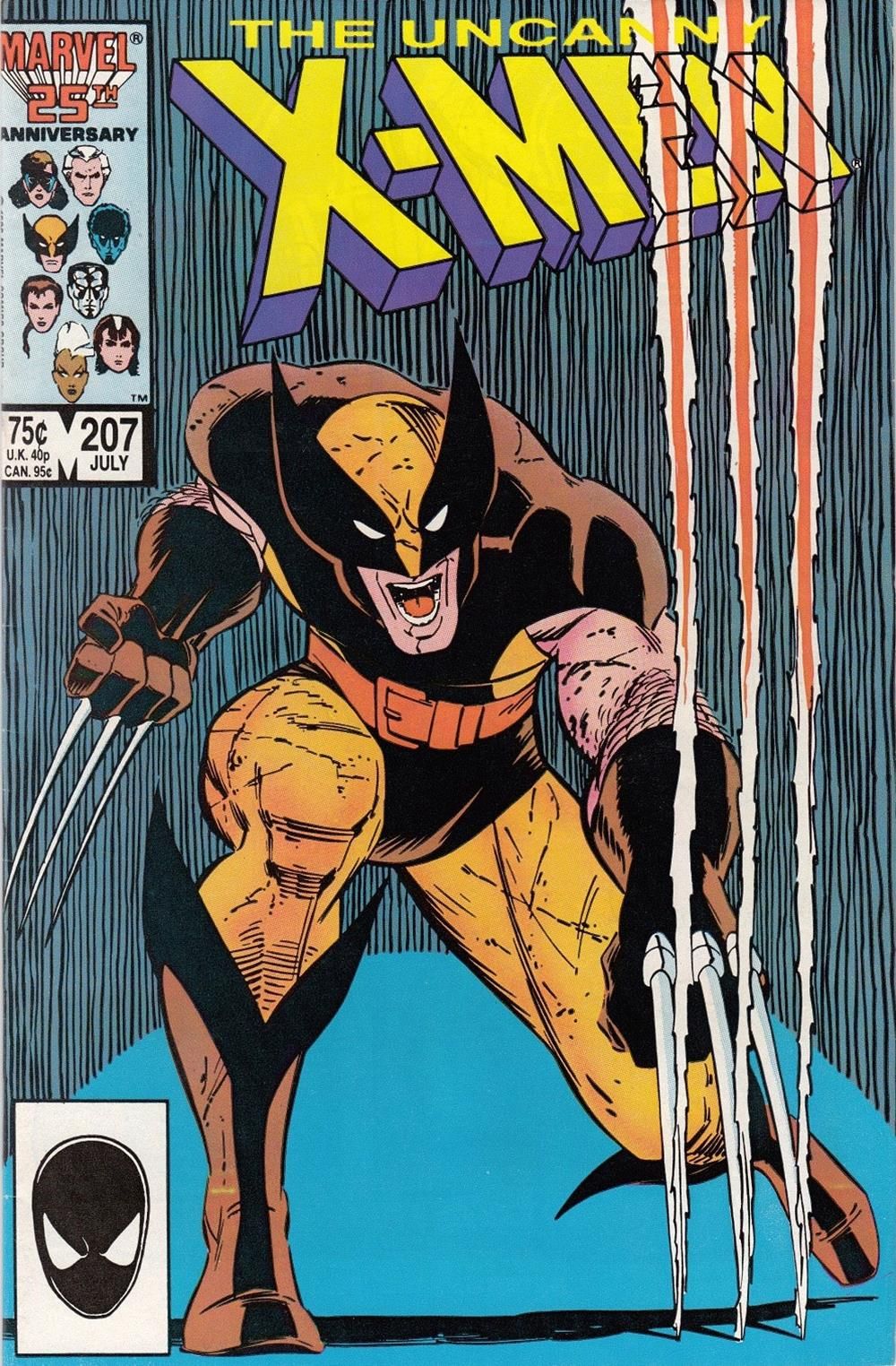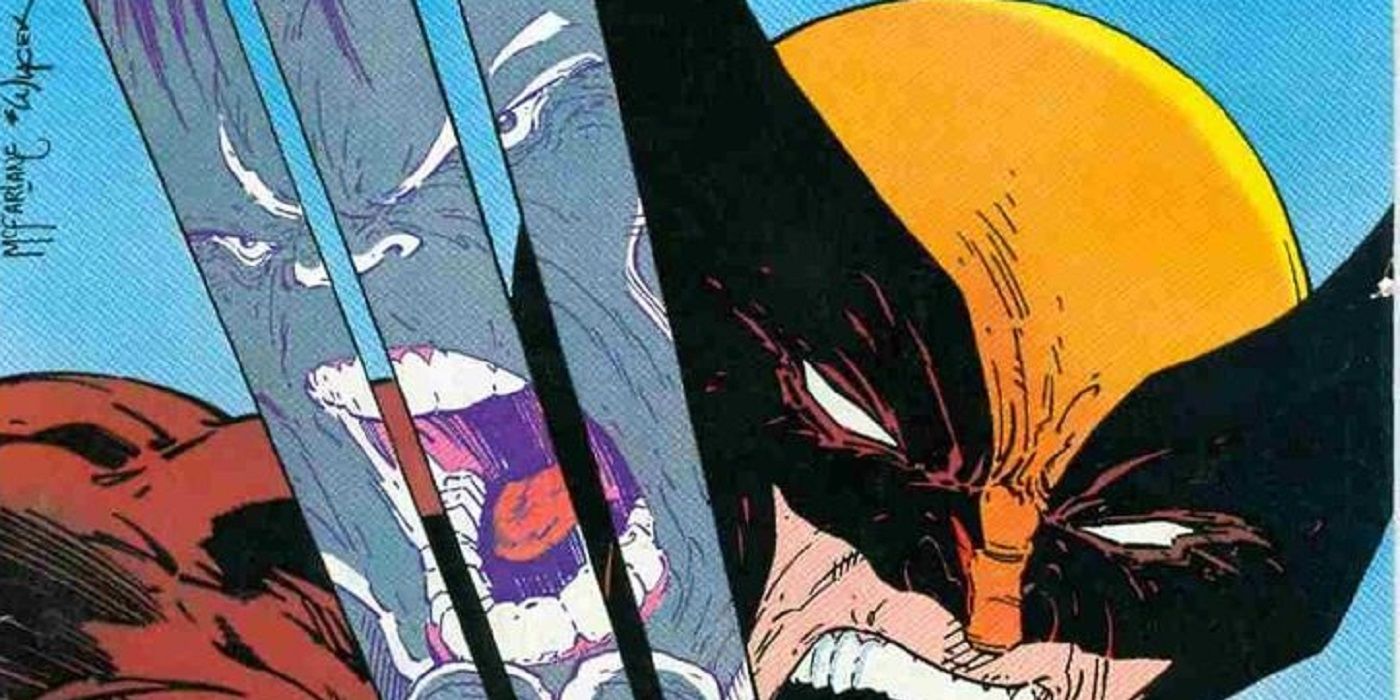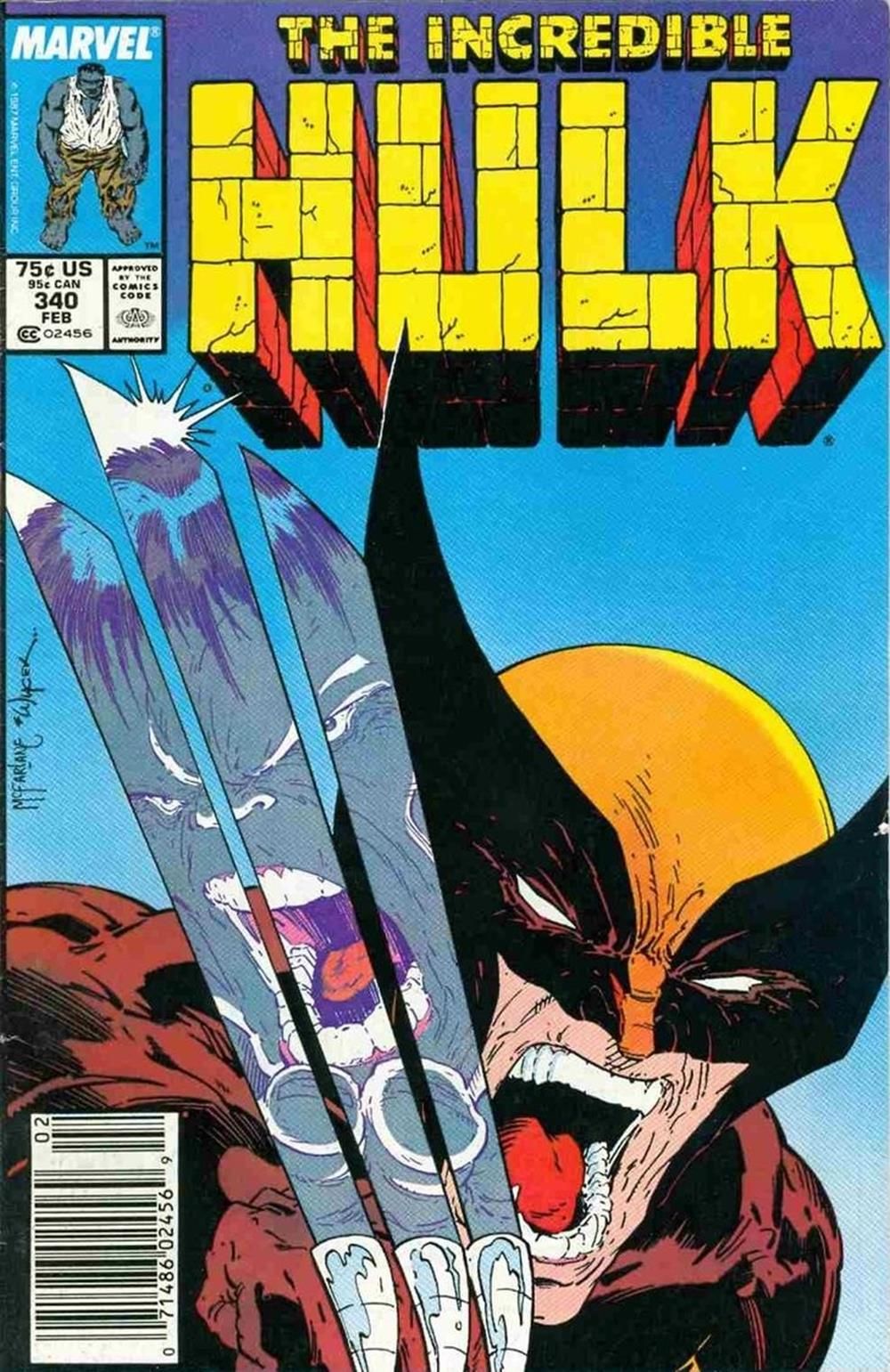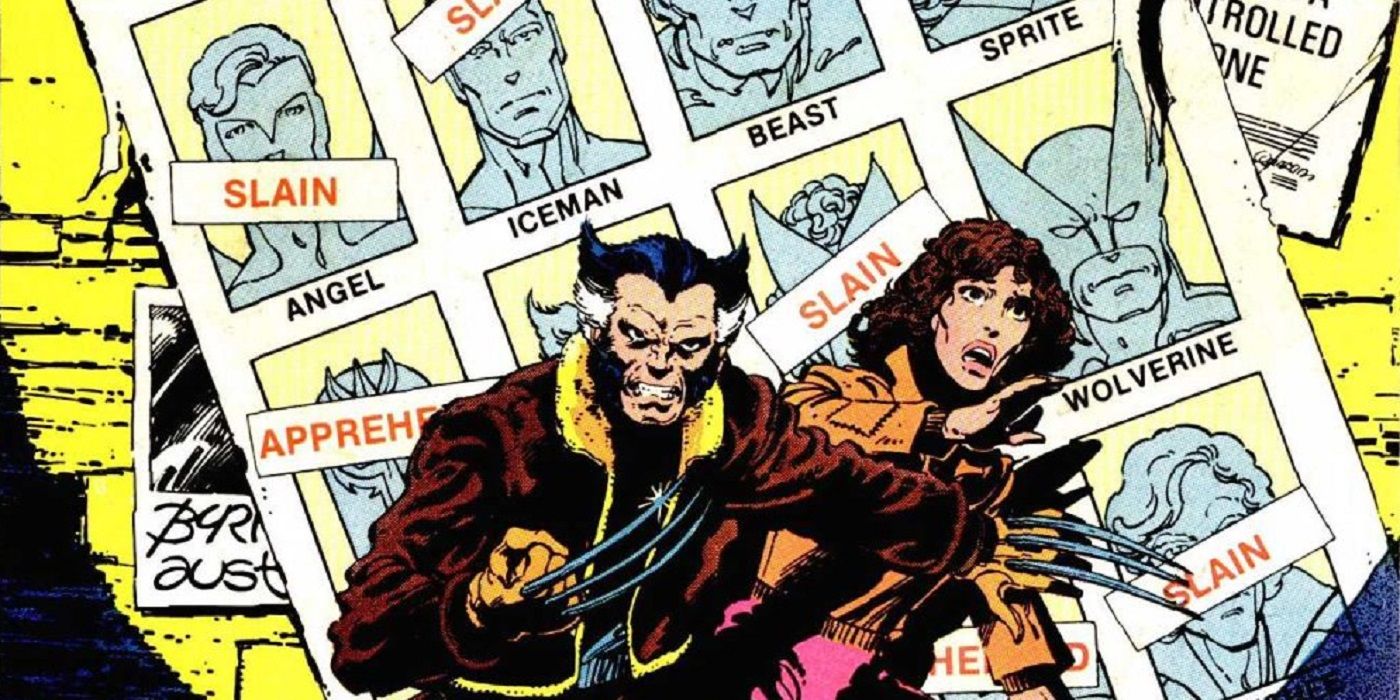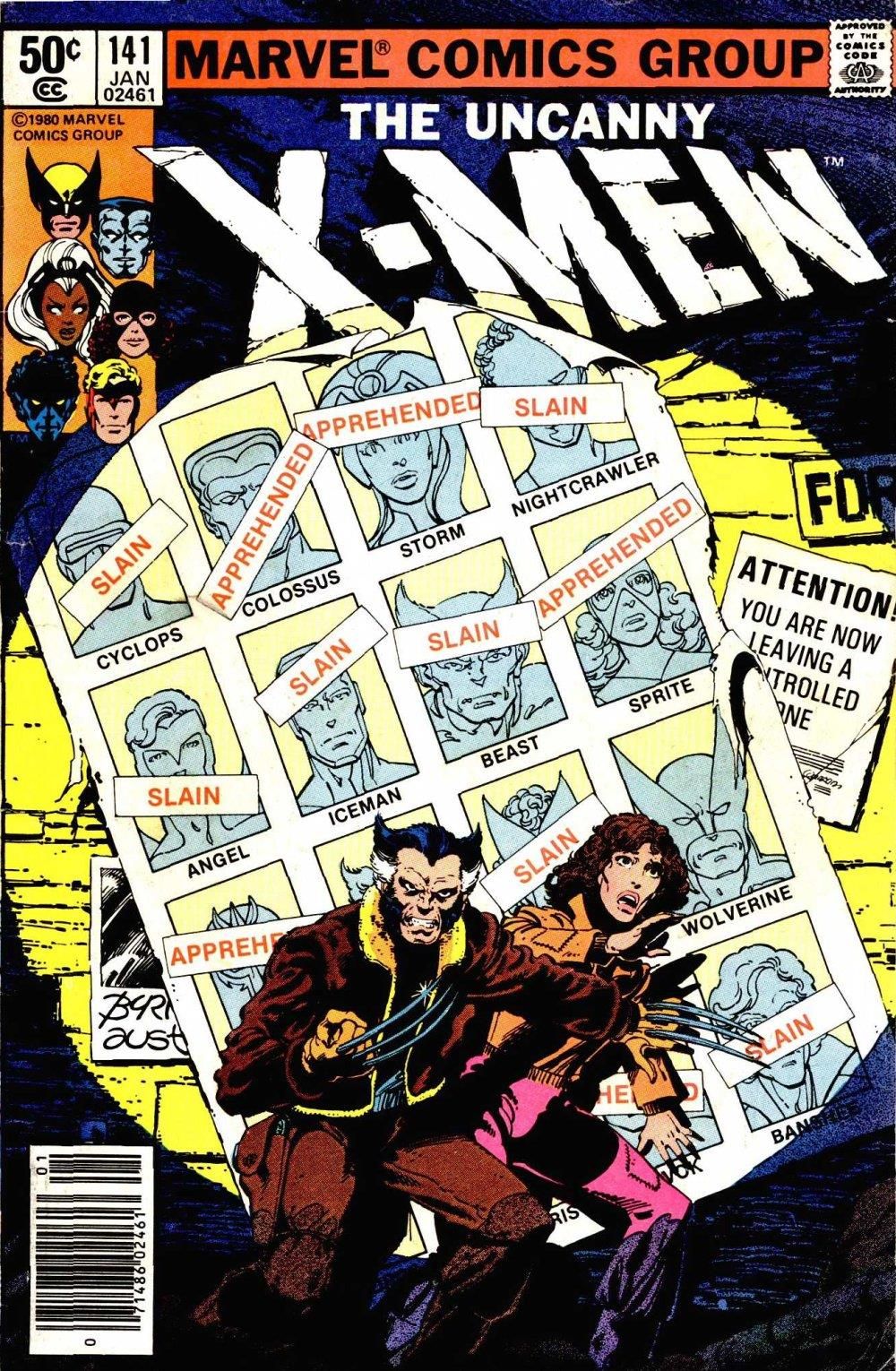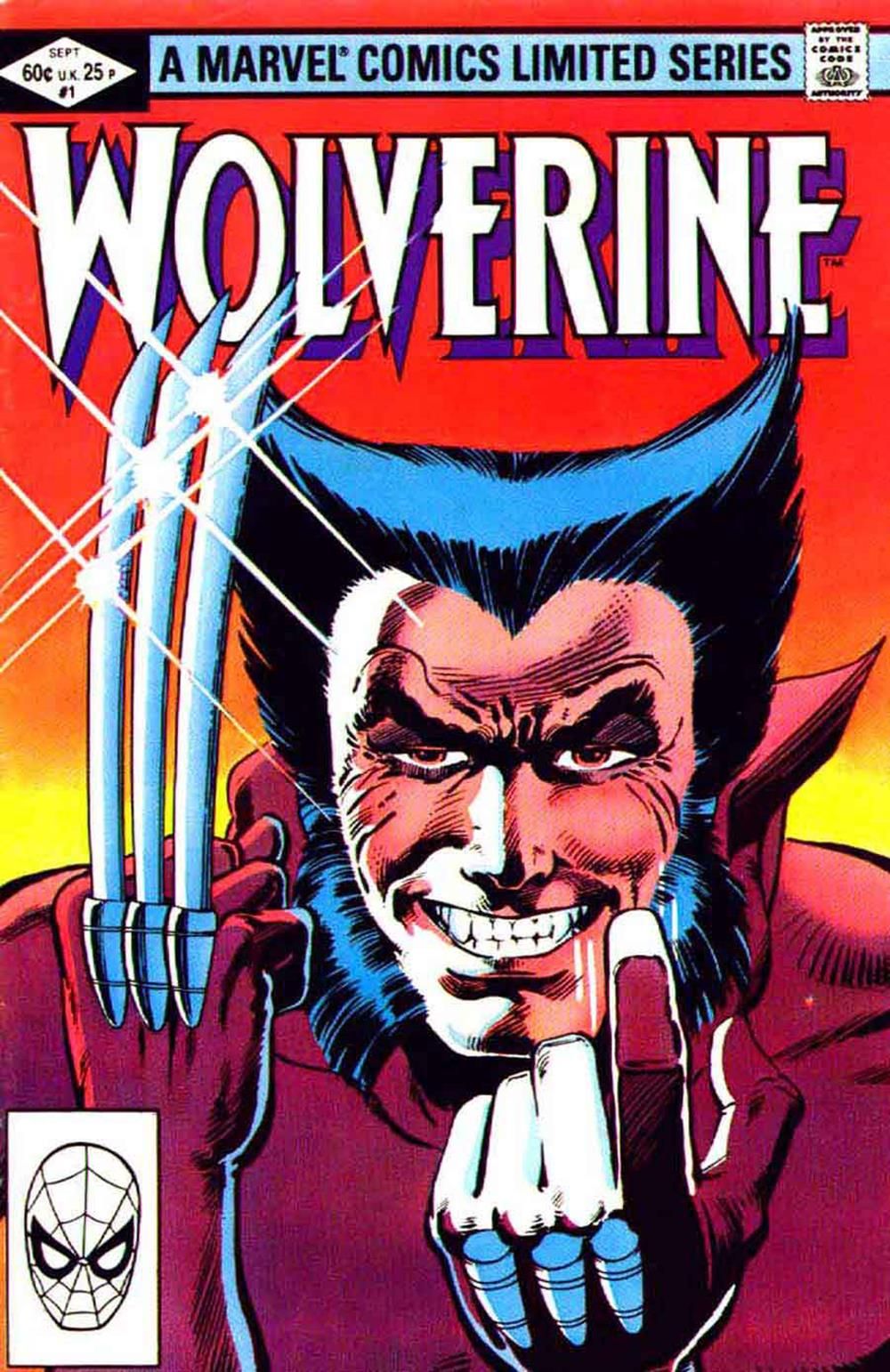Despite being one of the few characters in the cast who had appeared in the Marvel Universe before "Giant-Size X-Men" #1, Wolverine did not get much of a spotlight on the earliest "X-Men" covers featuring the All-New, All-Different X-Men. Even when John Byrne took over as the artist on the series and began to push Wolverine as more of a feature character, the covers were still pretty evenly distributed among the different characters. It was not until Byrne was almost gone that Wolverine began getting more prominent coverage in the cover department. This, of course, would eventually lead to more than 30 years of comic book cover dominance for the diminutive Canadian mutant.
RELATED: Wolverine: His 15 Most Embarrassing Moments
Here, we will count down Wolverine's most iconic comic book covers. Let us stress that this does not mean best covers. While many of these covers are excellent covers, we're talking iconic, which is a mix between recognizability and historic importance. Without any further ado, here are the covers!
15 WOLVERINE #1 (FIRST ONGOING)
It's sometimes hard to imagine this, but there was a time when Wolverine only regularly appeared in one comic book a month, "Uncanny X-Men!" However, by 1988, it was becoming increasingly apparent that the character could sustain his own comic book series on a commercial standpoint. In fact, that was likely already clear a few years earlier, but the issue was whether the idea worked creatively and "Uncanny X-Men" writer Chris Claremont constantly fought against Wolverine getting his own title.
Finally, he agreed, but only after using Wolverine to launch an anthology series, "Marvel Comics Presents" (whose first cover, which was drawn by Walter Simonson, almost made this list) that set up Wolverine's ongoing series, where Wolverine would go by a new identity, "Patch," in the city-country of Madripoor. The stories would not be superhero oriented at all. In that vein, Claremont enlisted legendary artist John Buscema to draw the book. Buscema wasn't a big superhero fan, so he latched on to the "Casablanca"esque stories Claremont planned for this series. As you might imagine, most fans remember the first issue of Wolverine's first ongoing series, hence its spot on the list.
14 WOLVERINE #4 (MINISERIES)
One of the greatest strengths of the brilliant comic book artist Frank Miller has always been his sense of character design. Even when he was only doing layouts on "Daredevil" and Klaus Janson was doing the actual pencils and inks, Miller's character design was apparent in his work, as his figures always seemed to be positioned in very distinct fashions that really caught the eye. Think Daredevil contorted against a sea of arrows on the cover of "Daredevil" #189 or Batman leaping into the fight against the Mutant Leader in "Batman: The Dark Knight" #2.
This was the case on the cover of the final issue of the original "Wolverine" miniseries, with Wolverine crouching, lighting a cigarette and readying to pull the trigger on a crossbow. It captured Wolverine's personality beautifully with an image that popped off of the intentionally blank background. Joe Rubinstein does not get enough credit for the "Wolverine" miniseries, as he didn't just ink Miller, but he actually did finishes over Miller's breakdowns.
13 UNCANNY X-MEN #251
After sending the X-Men to Australia following "The Fall of the Mutants" (where the X-Men were believed to be dead by the rest of the world), that set-up quickly dried up, so Chris Claremont came up with a very bold idea of essentially breaking the X-Men up. "Uncanny X-Men" would, for over a year, not actually star the X-Men, per se, but rather the disparate members of the team as they slowly came back together in an entirely new incarnation, along with brand new members (and some shocking brand new looks for some of the members). This was a bold move, and to go along with it, the storyline opened with a very bold cover by regular series artists, Marc Silvestri and Dan Green.
Wolverine had returned to the Australian home of the X-Men to see the rest of the team gone, but Donald Pierce and the Reavers waiting for him. They crucified Wolverine on a giant X. Luckily, the X-Men had a runaway secretly living in their house and this young girl, Jubilation Lee, rescued Wolverine. The two became close friends.
12 WOLVERINE (VOLUME 3) #66
Mark Millar had earlier had a popular stint on this volume of "Wolverine" where he told a year-long story called "Enemy of the State," where Wolverine was killed by the Hand and then resurrected as a brainwashed Hand assassin. The first cover of that storyline (drawn by the artists on that arc, John Romita Jr. and Klaus Janson) almost made it on this list (it was literally #17 when we counted out the covers). He returned for a somewhat shorter arc with artists Steve McNiven and Dexter Vines for a storyline called "Old Man Logan," which saw the adventures of Wolverine in the future, where he had been retired from being a superhero for years.
The stunning McNiven/Vines wraparound cover has become closely associated with the story arc, which was the most famous "Wolverine" storyline of the past 20 years and was the basis for the current blockbuster film, "Logan." Thus it is one of the few recent covers to merit inclusion on this list.
11 UNCANNY X-MEN #205
Despite working for Marvel Comics on a couple of different titles during the late 1960s, Barry Windsor-Smith really made a name for himself when he and Roy Thomas launched "Conan the Barbarian" to surprise success in 1970. Now a superstar, Windsor-Smith left the series (and comic books entirely) in 1973 to pursue a career in fine art.
He eventually returned to comic books in the early 1980s, albeit with a fascinating new style, maintaining the detailed work of his "Conan" comics, only even more stylized in design. He did a stunning one-off issue of "Uncanny X-Men" with Chris Claremont in 1984 spotlighting Storm and Forge (the first part of what was planned as a trilogy starring Storm - the second part appeared in 1986 and the third part never appeared at Marvel. Windsor-Smith ultimately released it himself with a new character taking the place of Storm). His second visit to "Uncanny X-Men" was eagerly anticipated and issue #205 did not disappoint. His work was one of the most distinct of the 1980s.
10 CAPTAIN AMERICA ANNUAL #8
As noted earlier, it sometimes comes as a shock to people to consider that Wolverine only appeared in one ongoing series back in the 1980s. Not only that, though, but he also very rarely made appearances outside of that comic book. When Wolverine showed up in another comic book title, it was a big deal. From 1975-1985, not counting his own miniseries and times that the X-Men as a group guest-starred in a comic book, Wolverine made just a handful of solo guest spots, almost all of which were in "Alpha Flight." So when he showed up in "Captain America Annual" #8 in 1986, it was a big deal.
It was made even a bigger deal with the great Mike Zeck drew the cover. Mike Zeck was hot off of his stint on "Secret Wars" for Marvel and drew some of the most stunning covers of the 1980s on "Captain America" and "G.I. Joe: A Real American Hero," and he blew many young minds with this poster-worthy cover of Wolverine's claws slashing at Captain America's shield.
9 MARVEL COMICS PRESENTS #79
With his return to mainstream comic books, Barry Windsor-Smith began to want to do projects where he could write the comic, as well. Marvel naturally was willing to oblige, as he was such a star artist. The perfect project that Windsor-Smith and Marvel came up with was the first attempt to tell the origins of how Wolverine got the adamantium added to his skeleton. Up until this point, Wolverine had never suggested that he did not know the particulars of the past, but in "Weapon X," which was serialized in the "Marvel Comics Presents" anthology, we now learned that certain details of Wolverine's past were blocked to him.
The dark and gritty tale showed Wolverine captured and then experimented on as they tried to turn him into a perfect killing machine. The striking visual of the helmet monitoring Wolverine during the experiment, along with all of the various wires and IVs led to a haunting cover on "Marvel Comics Presents" #79 (all of the covers were memorable, but this was the most memorable).
8 WOLVERINE (VOLUME 1) #27
One of the toughest calls that we had on this list was determining which "Wolverine jumps forward with his claws out" cover we featured on the list. Since they're all so similar, we couldn't very well call all three of them "iconic," so we had to pick one. The options were Frank Miller's "Wolverine" #2 (from the miniseries), John Byrne's "Wolverine" #17 and Jim Lee's "Wolverine" #27.
Ultimately, we went with Lee's cover, as not only did it perfectly capture the spirit of Wolverine in the early 1990s (lots of leaping into frays with his claws out) and get one of the most popular "X-Men" artists ever onto the list in Jim Lee, but also this particular image was used frequently by Marvel in their licensing products of that era, making it stand out to readers of that generation a bit more than the other two excellent covers.
7 UNCANNY X-MEN #211
1986 saw Marvel Comics celebrating the 25th anniversary of the "Marvel Age" of comics with a novel approach for all of the covers of Marvel's titles released in August, which was to feature a border on the cover drawn by John Romita of all of the various characters featured in Marvel Comics at the time, and then a spotlight image of the main character of the series. When it came to team books, it was interesting to see who they would pick for the "main" character, but with "Uncanny X-Men," by 1986 (by John Romita Jr. and Bob Wiacek), everyone knew that the star of the book was Wolverine.
The celebration took place right at the beginning of a best-selling crossover, "Mutant Massacre," where the X-Men fought against the deadly Marauders, who were entering the sewer tunnels (where a group of mutants known as the Morlocks lived) just to kill as many Morlocks as they could. The cover features a bloodied and battle-damaged Wolverine. Combine a memorable anniversary cover stunt with one of the most popular "X-Men" crossovers ever and you have a recipe for a memorable cover (the next issue's cover almost made this list, as well).
6 UNCANNY X-MEN #173
In an early adventure during Chris Claremont and John Byrne's tenure on "Uncanny X-Men," the X-Men traveled to Japan. Wolverine met a woman there named Mariko Yashada. He fought for her hand in marriage in 1982's "Wolverine" miniseries and, in "Uncanny X-Men" #172 by Chris Claremont, Paul Smith and Bob Wiacek, it seemed like that happy day was finally here. However, when the X-Men showed up for the wedding, the team was attacked by poison. Only Wolverine (due to his healing powers) and new member Rogue (due to her stolen powers from Ms. Marvel) were in condition to still fight. Wolverine didn't trust Rogue (she had just joined the X-Men after being a villain of theirs), but he had no choice but to work with her. This was commemorated with a stunning Paul Smith cover for "Uncanny X-Men" #173.
In that issue, after a brilliant fight sequence, Rogue took a laser blast meant for Wolverine and he let her absorb his healing powers to heal herself, as he now fully trusted his new teammate. This Smith cover memorialized that turning point in Rogue's "X-Men" history.
5 UNCANNY X-MEN #142
"Days of Future Past" saw an adult Kate Pryde (no longer "Kitty") visit the present from the future to help convince the X-Men to save Senator Robert Kelly from being assassinated by the newly-reformed Brotherhood of Evil Mutants, as Kate knows that Kelly's death leads to him becoming a martyr that in turn leads to the launching of a Sentinels program that results in mutants being hunted down and mostly killed, with the survivors being turned into slaves in camps or living on the run, constantly in fear. While Kate is trying to change the past, the X-Men of the future try to do some good in their time period, as well. It does not work out so well.
In a battle with the Sentinels, the surviving X-Men are slaughtered, including Wolverine. The cover for this issue was supposed to be by John Byrne, but his cover was lost in the mail (it ultimately arrived, but too late to be used). Terry Austin, the inker of the book, then drew a new cover based on a Byrne panel from inside the comic. The stunning sight of Wolverine being atomized was burned into the retinas of readers all over.
4 UNCANNY X-MEN #207
As noted earlier, towards the end of Byrne's run, Wolverine began to get spotlighted on covers more frequently, but after Byrne left, there was actually a bit of a lull. That lull died out by the mid-1980s, when Wolverine was prominently featured on a number of covers all within a single year, with starring roles on "Uncanny X-Men" #205, 207, 211, 212 and #213! John Romita Jr. and Dan Green gave Wolverine a powerful spotlight image with this cover, as Wolverine almost "broke the fourth wall" with his claws tearing at the cover.
Marvel ran a popular house ad around this time featuring a few covers that prominently featured this cover, which makes it stand out even more in terms of being a memorable cover from this era, where Wolverine was solidifying his status as one of the most popular characters in all of Marvel Comics.
3 INCREDIBLE HULK #340
Todd McFarlane joined Peter David on "Incredible Hulk" soon into David's run as the solo writer on the series. This was McFarlane's first major superhero work for Marvel Comics (after doing "Infinity Inc." for DC Comics) and the artist was clearly on the rise at Marvel. David soon knew how to gear the book to McFarlane's strengths as an artist, which was typically dynamic action sequences. One thing McFarlane wanted to do was something that most artists of the era at Marvel wanted to do, which was to draw Wolverine.
After much pleading, the "X-Men" editors finally approved a Wolverine guest appearance in "The Incredible Hulk" #340 (by David and McFarlane), and McFarlane made sure to come up with a unique cover design that really stood out when paired with his dynamic pencils (he was inked on the cover by Bob Wiacek, but inked himself in the actual comic). The comic book world was so amazed by this issue (especially the cover) that McFarlane was soon upgraded to becoming the regular artist on "Amazing Spider-Man."
2 X-MEN #141
As noted earlier, "Days of Future Past" was about Kate Pryde traveling to the present (her past) to help stop a horrible future from occurring. It was the final multiple-part story on "X-Men" that John Byrne did on the series, who left the book with a final one-off story in "Uncanny X-Men" #143. Interestingly enough, "X-Men" #141 was also the last issue before the book officially changed its title to "Uncanny X-Men" ("Uncanny" had been in the title for years, but the official title was still simply "X-Men").
John Byrne and Terry Austin's image of an older Wolverine and an adult Kate Pryde being caught in a spotlight against a backdrop of posters showing the rest of the Marvel mutant-verse either dead or captured is not just one of the best covers to feature Wolverine of all-time, but also it is one of the best comic book covers of all-time period. However, as amazing as it was, it doesn't quite hit the top of this list.
1 WOLVERINE #1 (MINISERIES)
The top honor belongs to the cover of the first issue of Wolverine's very first solo series by Chis Claremont, Frank Miller and Joe Rubinstein. The 1982 series allowed Miller to take his interest in ninjas that he had developed on "Daredevil" (and was about to carry over to "Ronin" for DC Comics) and apply it to Wolverine, as Wolverine travels to Japan and fights a whole bunch of ninjas in this comic book series, which really embraced the "Wolverine as samurai" take that Claremont and Byrne had begun to set up during the X-Men's first trip to Japan (Claremont and Byrne were both fans of "Shogun").
The way that Millar has Wolverine popping his claws with one hand while literally gesturing towards the reader with the other to, in effect, "come at him," makes this not only a catchy cover, but also it so perfectly encapsulates Wolverine's personality that the fact that this would be the cover of his very first solo series is a piece of cosmic justice. There is little doubt that this is the most iconic Wolverine cover of all-time.
What do you think is the most iconic Wolverine comic book cover? Let us know in the comments section!

